How many Majors has Lee Trevino won?
Lee Trevino has won 6 Major Championships. The 1968 US Open, the 1971 US Open, the 1971 Open Championship, the 1972 Open Championship, the 1974 PGA Championship and the 1984 PGA Championship.

More about Lee Trevino’s Major wins.
Lee Trevino was born on the 1st of December 1929 in Garland, Texas.
Trevino was introduced to the game of golf when his uncle gifted him a few golf balls and a golf club.
He left school at the age of 14. He earned his money working as a caddie and shoe shiner.
Lee is regarded as one of the greatest players and characters in golf history.
In total Trevino won 6 Major Championships and 29 PGA Tour events.
In 1981 Trevino was inducted to the World Golf Hall of Fame .
He is one of only four players to twice win the US Open, The Open Championship and the PGA Tour Championship. The Masters was the only major he never won.
1968 US Open - Major Championship
The 1968 US Open Championship was played at the East Course of Oak Hill Country Club in Rochester, New York.
In 1968 Travino was the first player to shoot under par in all 4 rounds of a the US Open.
Lee Trevino won the 1968 US Open Championship with a total score of (275 / -5) four strokes ahead of runner-up Jack Nicklaus .
The winner’s share was $30,000.
1971 US Open - Major Championship
The 1971 US Open was played at the East Course of Merion Golf Club in Ardmore, Pennsylvania.
Lee Trevino won the 1971 US Open Championship with a total score of (280 / Even) defeating Jack Nicklaus by three strokes in an 18-hole playoff.
The winner’s share was $30,000
1971 Open Championship
The 1971 Open Championship was played at Royal Birkdale Golf Club in Southport, England.
Lee Trevino won the 1971 Open Championship with a total score of (278 / -14) one stroke ahead of Lu Liang-Huan.
The winner’s share was $13,200.
1972 Open Championship
The 1972 Open Championship was played at Muirfield Golf Links in Gullane, East Lothian, Scotland.
Lee Trevino won the 1972 Open Championship with a total score of (278 / -6) one stroke ahead of runner-up Jack Nicklaus .
The winner’s share was $13,750.
1974 PGA Championship
The 1974 PGA Championship was played at Tanglewood Park in Clemmons, North Carolina.
Lee Trevino won the 1974 PGA Championship with a total score of (276 / -4) one stroke ahead of defending champion Jack Nicklaus .
The winner’s share was $45,000.
1984 PGA Championship
The 1984 PGA Championship was played at Shoal Creek Golf and Country Club in Birmingham, Alabama.
Lee Trevino won the 1984 PGA Championship with a total score of (271 / -15) four strokes ahead of runners-up Gary Player and Lanny Wadkins.
The winner’s share was $125,000.
Check out more players
- Ray Floyd’s Major Wins
- Johnny Miller’s Major Wins
- Jack Nicklaus’ Major Wins
- Arnold Palmer’s Major Wins
- Gary Player’s Major Wins
- Lee Trevino’s Major Wins
- Tom Watson’s Major Wins
- Tom Weiskopf’s Major Wins
SEARCH for other players
Share with your friends
Updated: 2-Nov-2023 | Email feedback to this question
Questions: Random | Recent | Categories
Celebrities and Entertainment in Golf
Golf Courses of the World
Champions of the Game
Golf History
Playing the Game
Recent and Upcoming Events
Rules of Golf
Women's Golf
More golf questions for you
Who designed the Oaks Course at TPC San Antonio?
What is Al Michaels’ golf handicap?
How many British Opens has Nick Faldo won?
How Many Majors Has Xander Schauffele Won?
Where is John Huh from?
How fast does a golf ball travel?
What is the course record at The Old Course at St Andrews?
What is Mark Mulder‘s golf handicap?
What is the best way to watch the Masters?
What was Dennis Quaid’s lowest handicap?
OUR MISSION
GOLF TRIVIA. Your home for fun and interesting golf questions and facts. You simply can enjoy our golf trivia, sign up and become an accredited publisher or subscribe to our newsletter so we can keep you in the loop. It's all for FREE.
Recent Golf Questions
LATEST QUESTIONS
Quick links, submit questions.
Become an Accredited Publisher and get your name in lights on Why We Love Golf. If you’re a passionate writer and researcher join the community, publish your own questions, and be recognised by your golfing peers.
Register your interest
Cookie banner
We use cookies and other tracking technologies to improve your browsing experience on our site, show personalized content and targeted ads, analyze site traffic, and understand where our audiences come from. To learn more or opt-out, read our Cookie Policy . Please also read our Privacy Notice and Terms of Use , which became effective December 20, 2019.
By choosing I Accept , you consent to our use of cookies and other tracking technologies.
Filed under:
The Ballad of Lee Buck Trevino, Golf Legend
Trevino won his final of six major tournaments 35 years ago Monday. His legacy is long on the course, but it’s especially long off of it, and his friends and former competitors all have tall tales to share about the man they call “Super Mex.”
/cdn.vox-cdn.com/uploads/chorus_image/image/65042217/Lee5.0.jpg)
Share this story
- Share this on Facebook
- Share this on Twitter
- Share All sharing options
Share All sharing options for: The Ballad of Lee Buck Trevino, Golf Legend
Once there was a small man of Mexican heritage with a strange, self-taught swing who emerged from abject poverty to electrify the golf world. He grew up caddying on the windswept courses of Dallas’s déclassé side, learning the sport from a rogues’ gallery of reprobates and hustlers. Unlike most professional golfers, he had no formal training, just swagger, self-belief, and innate ability. It wasn’t much. But as it transpires, it was more than enough.
Lee Trevino, who’s approaching his 80th birthday, has lived a life straight out of the country and western ballads he used to sing along to with his old friend Charley Pride. The six-time major champion’s swashbuckling style and magnanimous temperament has engendered more good will across a broader spectrum of people than perhaps any other player in the history of the game. He won his first major championship at the U.S. Open at Oak Hill in 1968, in just his second season on Tour, and his last at the 1984 PGA Championship at Shoal Creek, 35 years ago today. To celebrate that anniversary, we—with an assist from Trevino’s longtime friends, past competitors, and current touring pros—give you this collection of tributes and tall tales, all concerning the most entertaining and unlikely legend the sport has ever known.
“A Hell of a Penalty for Slow Play”
Tom Watson wasn’t on the course when bad weather hit the 1975 Western Open in Oak Brook, Illinois, but he remembers the storm vividly. “I’ve been around a lot of thunderstorms, and I have never witnessed a more violent one in my life,” Watson said during a phone conversation last week. “There was a lightning bolt every five seconds. It was just as violent as you could ever see. And I remember thinking, ‘Are these guys gonna be OK out on the golf course?’”
Trevino recollects that fateful afternoon a little differently in his 1982 memoir, They Call Me Super Mex : “The rain didn’t look like it would last that long, so [my playing partner] Jerry Heard and I decided we’d relax on the 13th green and have a little picnic. I sent my caddy for soft drinks and hot dogs and we sat on the edge of the green by the lake, me leaning up against my bag and Jerry beside me with his umbrella between his legs.”
Trevino was 36 years old at the time, already a five-time major champion, and he’d never had much use for caution. In this instance, however, he could have used some. A lightning strike skipped off the lake, carried through his metal clubs and directly up his spine. He was knocked out immediately, and when he came to, Trevino had no feeling in his left side. He was gasping for air and his back was covered with burns. By the time he reached the emergency room, the situation seemed dire enough that he requested to speak to his wife, Claudia, over the phone, just in case goodbyes were in order. She asked him in a shaky voice: “How do you feel?” Struggling to draw a breath, the 5-foot-7 Trevino responded: “Sensational. For the first time in my life I was 6-foot-2.”
That’s one of the many harrowing stories Trevino tells about his life, and just about every individual who has played on the PGA Tour at any time over the past five decades has a memorable story about him, too. All you have to do is ask.
Bernhard Langer, the two-time Masters champion, recalls a yarn he heard about Trevino’s early, pre-tour days in the 1960s when he made his living as a sharpie working the Texas gambling circuit. “In the old days the guys didn’t make a lot of money,” Langer said. “There wasn’t much money in tournaments, and there weren’t many tournaments. Raymond Floyd was one of the best players around at the time and he would travel around when there was no tournament and look for money games at some of the clubs.”
:no_upscale()/cdn.vox-cdn.com/uploads/chorus_asset/file/18994904/Group_Selfie_s.jpg)
One day, Floyd, who would go on to win four major championships and have a Hall of Fame career, received an odd overture to play for significant cash down in El Paso.
“Raymond Floyd drove up with his Cadillac or his limousine, or whatever,” Langer said. “So Raymond gets out of the car and Lee Trevino was the bag boy, and he says, ‘Welcome, Mr. Floyd, let me get your bag for you, and what else can I do for you?’ And Raymond Floyd says, ‘Well, young man, who am I playing against today? Do you know anything about him?’ And [Trevino] says, ‘Well, that would be me, sir.’ And so Floyd looks and says, ‘What? I’m playing against a bag boy?’ And Lee says, ‘Yes, sir, and I’ll see you on the first tee in a little bit.’”
The obvious postscript to the story—the one in which an irate Floyd leaves the premises with his wallet considerably lighter and his mood commensurately darkened—is less crucial than the irrepressible levity with which Langer, the typically stoic and reserved German, relays it. Trevino was put on this earth to stand up for the little man—and make you laugh in the process.
“I Represent the Public Golf Courses, the Working Man, the Blue Collar Worker”
The paradox with Trevino is that, for a figure as universally celebrated and handsomely embroidered into the fabric of golf history, it is impossible to discuss his career without recognizing his status as a consummate outsider.
Golf, with its oversimplified but very real associations to privilege and power, possesses a shadow history as illicit and perverse as high-stakes poker. Before it was the province of manicured private hideaways and nine-figure TV deals, golf was a workingman’s game that often exerted pressures on its practitioners far beyond just winning. In his pre-tour days, Trevino would frequently compete against well-known gamblers with underworld connections. He assumed they were armed, and indeed robberies were not uncommon to see on the courses he played. At an El Paso track called Tenison, gamblers in money games would often jump ahead of recreational golfers on the course. The weekend hackers were in no position to stop them. “No telling how much artillery they had under their jackets or in their socks and golf bags,” Trevino wrote in his memoir.
Tom Watson said, “He always told me, ‘You learn how to play under pressure when you’ve got five dollars in your pocket and you’re playing for 10.’ And he played a lot of betting games, and he loved to bet. He loved to play for money, and that steeled him.” In modern days, Phil Mickelson has taken over the mantle as the tour’s most entertaining problem gambler , but there still isn’t a trick he couldn’t have learned from a young Trevino.
Ratifying Watson’s opinion is 2010 U.S. Open Champion Graeme McDowell: “Twenty-dollar bets with two bucks in the pocket. He was the smiling assassin. The snake on the first tee at Merion with Nicklaus . There’s really just not a lot of people like him.”
:no_upscale()/cdn.vox-cdn.com/uploads/chorus_asset/file/18994906/Lee_Trevino_and_Gary_Player.jpeg)
Trevino essentially became the connective tissue between the sport’s endlessly lucrative, buttoned-up, tech-forward present and its not-so-distant noirish past. But there were also moments when the golfer’s working-class roots caused him to bristle against the establishment.
In the early years of his career, Trevino engaged in a long and contentious feud with the Masters, Augusta National, and the club’s cofounder and chairman, Clifford Roberts. Trevino routinely refused invitations to arguably the most prestigious event in golf because Augusta National’s rules at the time blocked his friend, Charlie Sifford, the finest African American golfer of his generation, from competing. Trevino played there eventually but never seemed comfortable being on or around the course. Short rough and a layout that didn’t reward his patented fade were not a good fit for his game, and neither was Augusta’s haughty air of pretension. He once joked that if he hadn’t qualified as a player, the only way they would have let him onto the grounds was through the kitchen. It was the one major he never won.
According to longtime friend Gary Player, whose South African heritage marked him as a fellow interloper, being an outsider had its advantages: “We saw things differently. We were fighting to feed our families. Certainly no private jets. Just playing in America we would finish a tournament, rent a car, and drive a long, long way to be at the next course for our practice round. It was a challenge. But I am grateful for our struggles and delighted at what the young pros have today.”
It’s fair to assume that Trevino is also delighted at what the young pros have today. But he never fully lost the feral feeling of those heady pioneer times.
“All You Gotta Do Is Listen”
“Trevino was and is a chatterbox,” Player said. “Some players like Ben Hogan would not say a word to you during a round. Sam Snead wouldn’t look at you swing. You do what helps to focus, to relax, and in Lee’s case it’s talking—a lot.”
A refugee from the public links, Trevino never cared to bend the knee to golf’s rarefied air and rules of comportment. He talked constantly on the course. He kissed his putter when it acceded to his wishes . After a great shot he would waggle his club like a magic wand. It wasn’t done out of disrespect. It was just so exciting to be great.
Not everyone took it that way, though. Langer remembers an incident in the 1972 World Match Play tournament when Trevino’s playing partner prevailed upon him to button his lip: “It was one of the richest events at the time. Tony Jacklin, the best British golfer, had just won the British Open and the U.S. Open within a year or so. And it was at Wentworth, his home golf course, in his home country. He and Trevino were playing head-to-head for the championship on Sunday. Tony was walking to the first tee and Lee was waiting for him and they shook hands and said good luck, and Tony said to Lee, ‘Listen, Lee, this is an important day for me. I’m playing in front of my home fans in my home country. This is a big tournament, so I’m not gonna be talking a lot, not saying a lot, I’m gonna just focus on my game.’ And Lee looked at Tony and said, ‘That’s quite all right, Tony. All you gotta do is listen.’”
Trevino’s irreverence on the course and off made him a natural fit for a cameo in the deeply silly but oddly reverential 1996 Adam Sandler golf vehicle Happy Gilmore . Sandler’s larger-than-life renegade who throws the tour into chaos by virtue of his unorthodox methods is something like an exaggerated version of Trevino’s own trajectory.
Trevino was known for poking as much fun at others as he did at himself, which is part of why he became so beloved. “You don’t see that today,” Watson said. “There just aren’t that many players that do it.” But while that attitude endeared him to many of his former competitors, they also agree that much of Trevino’s comportment, both on and off the course—where his penchant for partying was conspicuous—wouldn’t fly in the context of the modern PGA Tour.
“He probably would have been reprimanded by someone,” Player chuckled. “A lot of players in my prime may have gotten themselves in all kinds of trouble. Definitely Arnold Palmer. We at least were fortunate to have some sense of privacy before all of this technology took over people’s lives.”
In the next breath, though, Player pointed out the obvious irony: “He would have been one of the best follows on social media! A fiery, opinionated Mexican dominating golf—the world was enthralled with him. I can only imagine how popular he’d be today.”
“I Learned Courage From My Grandfather Digging Graves at Night”
You know how a lot of celebrity memoirs dwell on the subject’s pre-fame days and childhood reminiscences to the point of tedium? Trevino’s autobiography is not like that. And not because he doesn’t discuss his childhood—he does at length. But because his childhood is fascinating. If Trevino were to pick up his golf bag and walk directly into the pages of a Mark Twain novel, it would make perfect sense.
Trevino was born in 1939. In his early years he was raised by his mother and grandfather in a four-room shack in North Dallas. They lacked indoor plumbing and running water. Trevino never knew his father, but he doesn’t sweat it overly much: “It’s not a sensitive subject,” he wrote. “Everybody knows. Reality is reality.”
He was rambunctious but sweet. Close to his grandfather, a ditch digger whom he idolized and eventually assisted on late-night assignments in the cemetery. That was scary to a 6-year-old at first, but the experience helped make him fearless. The original Dallas Athletic Club was located right in his backyard, and he spent afternoons watching the golfers amble by, alternatively ebullient or cursing the heavens, and wondering what the soap opera was all about. Eventually he’d find lost balls and sell them back for 10 cents a pop.
School didn’t hold his attention—he dropped out at 14—but golf did. He happily dedicated his days to working as a caddy and a course attendant at DAC. His fellow caddies provided an alternative sort of education. They were older city kids who shot dice and carried knives and fought frequently. He fit in just fine. Mostly he grinded on his golf. By acclamation, no player of renown has ever practiced harder.
Current PGA star Rickie Fowler says, “You look at his swing and how he went about things. Pretty, pretty old school. His legacy is that he basically came from nothing and learned how to actually dig it out of the dirt and just find his way around the golf course.”
Many years later, the hard-raised son of an illiterate mother and a father he never knew would swing his way from society’s lowest rungs to the heights of the PGA Tour—although Trevino himself has always been reluctant to lend too much significance to his journey. “Whatever happens is meant to happen,” he wrote in his memoir. “Unless you walk down the middle of the freeway and wait to get hit by a truck.”
“We Had Lots of Fun and Lots of Friends in El Paso”
Trevino’s story is about a lot of things: the collision of pre-modern technology and postmodern brand management; the growth of a sport that began as a backwater amusement and evolved into a signifier of upper-tier status. But inevitably one of the crucial themes of his story is social mobility. His default setting has always been to diffuse the pain of the discrimination and poverty he faced early in his life with humor and hard work, but that doesn’t mean the pain wasn’t there. Trevino’s capacity to integrate the self-made ethos of his early struggles with a notoriety that would cause him to rub shoulders with superstar celebrities and influential politicians is nearly as remarkable as his accomplishments on the course. The psychological whiplash must have been nearly as powerful as that lightning strike in 1975. Even as his fame grew, rejection was common. Even after achieving fame, Trevino preferred to stay in motels on the seedy side of town. That’s where he felt most welcome.
Although his Mexican heritage is inextricable from his brand identity—the “Super Mex” coinage was the inspiration of a friend, but he took to it with relish—his sense of American patriotism has always run deep. Trevino volunteered for the Marines and credits his experience in the service with forging his mettle as both a man and a golfer—representing the corps in competitions overseas was his first exposure to competitive tournament golf. Harry Truman was his hero, and he’s formed friendships with past presidents. “I remember one time we were playing together down in Palm Springs,” Watson said, “and it came to my attention that he had played with President Reagan. I said, ‘God, I’d love to have a chance to play with the president!’ Not two days later, I got a call: ‘Watson, we’ve got a game!’ I said: ‘What do you mean we’ve got a game?’ He said: ‘We’re going to play with the president!’ And I said: ‘How did you get this done?’ And Lee said: ‘I called up my friend Bob Hope and he arranged for it.’”
Toward the end of his autobiography, Trevino tells one more story about being an individual literally and figuratively from more than one place. It’s the summer of 1971, and the city of El Paso has declared it Lee Trevino Day in honor of the city’s most decorated transplant resident. “It was a wonderful time, actually a celebration of two cities,” Trevino wrote. “It started with a morning parade through El Paso, which moved across to Juarez. We stopped at the Palacio Municipal, the City Hall, and drank champagne with the mayor, who said some nice things in Spanish. That night they gave me my own street. Yeah, they named one of El Paso’s major thoroughfares in my honor. ‘I really appreciate Lee Trevino Drive,’ I said. ‘It’s the only street in El Paso I can spell!’”
So goes the ballad of Lee Trevino, an American hero of Mexican descent with a four-lane highway connecting disparate, symbiotic cultures and the poorest of the poor to the corridors of power. All it took was a surprising skill set, a boundless determination, and most importantly, an opportunity. That’s a story worth hearing now more than ever. All you gotta do is listen.
Elizabeth Nelson is a Washington, D.C.–based journalist, television writer, and singer-songwriter in the garage-punk band the Paranoid Style.
Dave’s Masters Champions Dinner Theory, Effective Plating, and Menu Formatting
Final masters takeaways and rbc heritage preview, how the media covered o.j., masters observations, and the rock backs away from politics.
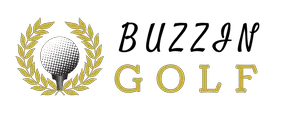
The life and times of Lee Trevino
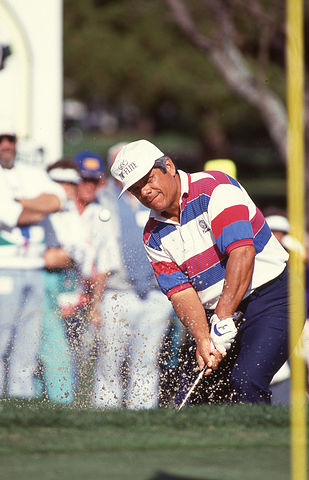
Lee Trevino had a long and storied career that included six major victories as well as 29 wins on each of the PGA and Champions Tours. Awarded for his dynamic career with an induction to the World Golf Hall of Fame in 1981, Trevino is known in the golf community for his quick wit and exceptional play on the biggest of golf’s stages.
Lee Trevino biography
A native of Dallas, Texas, Trevino was raised by his grandfather and mother. Trevino’s father left the family shortly after Lee was born leaving the golfer to be pressed into helping his family early in life, working the local cotton fields at the age of 5.
Several years later, Lee discovered golf after his uncle gave him an old club and a few golf balls. After falling in love with the game, Trevino began to caddie at the historic Dallas Athletic Club that was near his home. Earning $30 a week at the club, Trevino didn’t see much use for school, so he dropped out to pursue golf.
Utilizing the three small holes that ran behind the caddy shack at Dallas Athletic, Trevino hit hundreds of balls daily off the hard dirt that surrounded the shack. Practicing with these conditions, Trevino developed his signature uniquely compact swing.
Despite excelling at golf, Trevino enlisted in the U.S. Marine Corps at the age of 17. Even though Trevino served four years as a machine gunner, the game of golf was never far away. Lee played in several Armed Forces events throughout Asia.
Professional career
After Trevino left the Marines, he took a job as a club professional in El Paso, Texas. Trevino became known locally as a high-stakes player gambling with golfers to boost his salary.
Encouraged by other golfers, Lee entered in a local qualifier for the 1966 U.S. Open and made the playing field for the tournament at the Olympic Club in San Francisco. Trevino made the cut and tied for 54th place making $600.
The following year, Trevino returned to the U.S. Open and finished in 5th place earning his Tour card for the rest of the season. Trevino went on to win over $26,000 and was named Rookie of the Year by Golf Digest.
In the 1970s, Trevino won 21 of his 29 PGA Tour tournaments including four majors. He was one of Jack Nicklaus’ biggest rivals and responded by leading the money list for the PGA in 1970. In 1971, Trevino won six tournaments, including two majors, which would stand as his career high in a season. The following year, Lee won four more tournaments, including the 1972 Open Tournament.
One of the more incredible achievements of Trevino’s career was winning at least one PGA Tour event each year from 1968 through 1981. He also won more than 20 additional tournaments held across the world.
Another incredible aspect of Trevino’s career is how dominant he was in Ryder Cup competitions. He was a part of the U.S. team that won five of six Ryder Cups from 1971 through 1981. His 17 career victories in Ryder Cup matches place him among the very best to ever don the red, white and blue for team USA.
Trevino’s six majors
Trevino’s first win on Tour also happened to be his first major victory. At the Oak Hill Country Club, Trevino kept Jack Nicklaus at bay, winning the 1968 U.S. Open by four strokes. Trevino was trailing by one stroke heading into the final day, but a fourth straight round in the 60s gave Lee the title.
The 1971 U.S. Open at the Merion Golf Club brought Trevino his second, and most dramatic, major title. Four rounds were not enough to determine a winner between Nicklaus and Trevino, so the duo played a Monday 18-hole playoff for the title. A double bogey on the 3rd hole by Nicklaus put the Golden Bear in an early hole which he never recovered from. Trevino did not relinquish the lead as he finished with a three-stroke victory over Nicklaus.
Trevino’s third major would come the following month at the Open Championship. The golfer from Texas tamed the historic Royal Birkdale Golf Club taking the lead into the weekend and holding on for a one-stroke victory.
Trevino’s 1971 season with six wins and two majors made the golfer a household name in America. Sports Illustrated recognized Trevino’s dominant year by giving the golfer the prestigious title of Sportsman of the Year.
The following year, Trevino returned to the Open Championship and defended his title at the Muirfield Golf Links in Scotland. With a slim lead heading into the final round, Trevino held off a fierce challenge from Nicklaus, who started the day six strokes behind the leader. Lee holed a chip from off the green on the 17th hole to save par and secure the title.
Trevino would return to the States to win his fifth major. Heading into the 1974 PGA Championship, Trevino was struggling with his putter. So looking for an answer to help his problem, Trevino discovered a putter in the attic of a friend. He took the putter to Tanglewood Park Golf Course and proceeded to only have one three-putt over the four-round tournament. Trevino once again defeated Nicklaus by one stroke to claim the title.
Trevino’s sixth and final major came ten years later at the 1984 PGA Championship. The ten years between PGA titles had come at a hefty price for Trevino. In 1975, he was struck by lightning and suffered traumatic injuries to his spine. After several surgeries, Trevino had lost the magic that had carried him to his previous five major titles.
When Trevino arrived at Shoal Creek, the location of the 1984 PGA, in Birmingham, Alabama he was 44 years old, and many believed that his best days were behind him.
Trevino responded by posting a first round 69 then followed with a second round 68 to share the tournament lead heading into the weekend with Gary Player and Lanny Wadkins. A third round 67 gave Lee a one-shot advantage over Wadkins.
For the final round, Trevino wouldn’t have to keep Jack Nicklaus off his tail as his Sunday 69 clinched the PGA title with a four-shot win. The final major of Trevino’s career would also be his last PGA Tour victory.
Despite six major wins, one of Trevino’s great regrets is that he never won the Masters to complete the career Grand Slam.
Senior Tour
When Trevino moved on to the Champions Tour in the Spring of 1990, he regained the magic that the lightning had robbed him of 15 years prior. Over the next ten years, Lee would win 29 Champions Tour tournaments including four majors. He led the money list in multiple years and was widely given credit for being one of the main reasons that the Champions Tour survived through its difficult early stages.
Quotable Lee Trevino
One of the reasons that Lee Trevino became such a fan favorite both on and off the golf course was due to his magnetic personality and loving relationship with the press.
After being struck by lightning, Trevino was asked by a reporter what he will do differently in the future when facing severe weather. Lee famously told the reporter that he would reach into his bag, grab his 1-iron and hold it into the air “because not even God can hit the 1-iron.”
Toward the end of his career, Trevino summed up his golfing journey with another quote that encompasses the humor of the golfer: “I’ve been hit by lightning and been in the Marine Corps for four years. I’ve traveled the world and been about everywhere you can imagine. There’s not anything I’m scared of except my wife.”
Lee Trevino FAQ
Lee Trevino is American.
Lee Trevino was born in Garland, Texas.
No, Lee Trevino never won the Masters. It was the only major he didn’t win.
Lee Trevino won six majors:
- 1968 US Open (275 / -5)
- 1971 US Open (280 / Even)
- 1971 The Open Championship (278 / -14)
- 1972 The Open Championship (278 / -6)
- 1974 PGA Championship (276 / -4)
- 1984 PGA Championship (271 / -15)
Lee Trevino won 29 PGA tour events.
Lee Trevino won 5 titles on the European tour.
Lee Trevino is 1.70 m tall (5 feet 7 inches).
Lee Trevino was struck by lightning three times.
As of 2021, Lee Trevino’s net worth was an estimated $45 million.
Lee Trevino has 6 children.
Lee Trevino has been married three times.
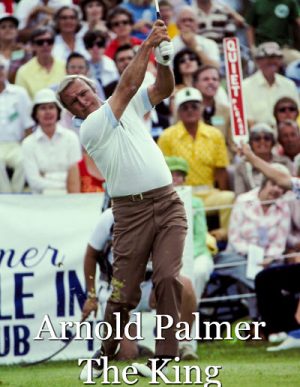
Arnold Palmer – The King

Ben Hogan Biography
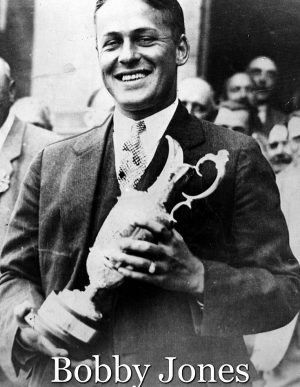
Bobby Jones
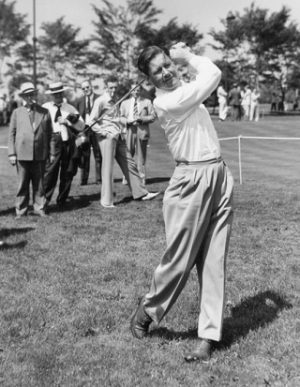
Byron Nelson
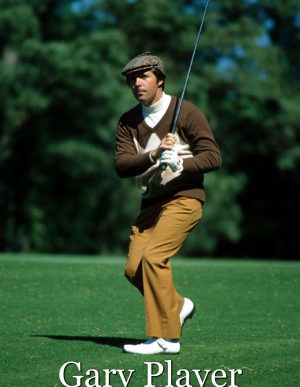
Gary Player

History of golf balls and golf clubs

History of golf’s major tournaments

History of the Masters
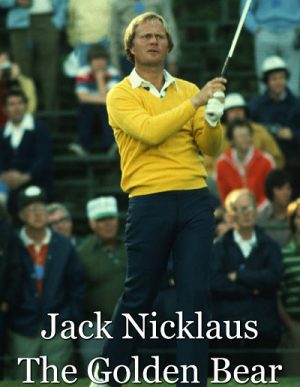
Jack Nicklaus – The Golden Bear
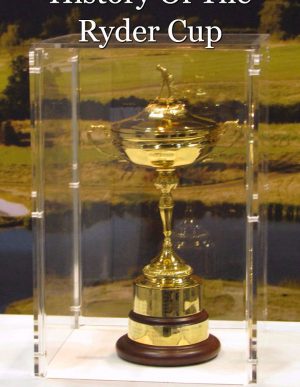
Ryder Cup history
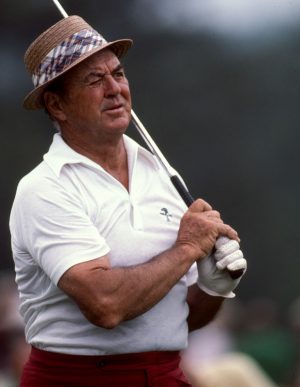
The life and times of Seve Ballesteros

The origins and history of golf

Tiger Woods
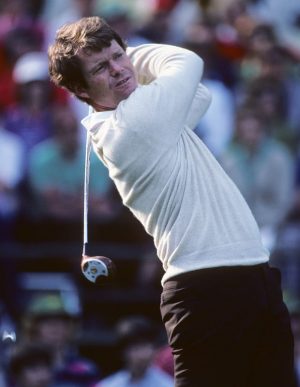
Walter Hagen
- FanNation FanNation FanNation
- Swimsuit SI Swimsuit SI Swimsuit
- Sportsbook SI Sportsbook SI Sportsbook
- Tickets SI Tickets SI Tickets
- Shop SI Shop SI Shop
- Free Agency
- What's on TV
- Golf Golf Golf
- Home Home Home
- News News News
- Leaderboard Leaderboard Leaderboard
- Schedules Schedules Schedules
- SI Rankings SI Rankings SI Rankings
- Travel Travel Travel
- Instruction Instruction Instruction
- Gear Gear Gear
- Betting Betting Betting
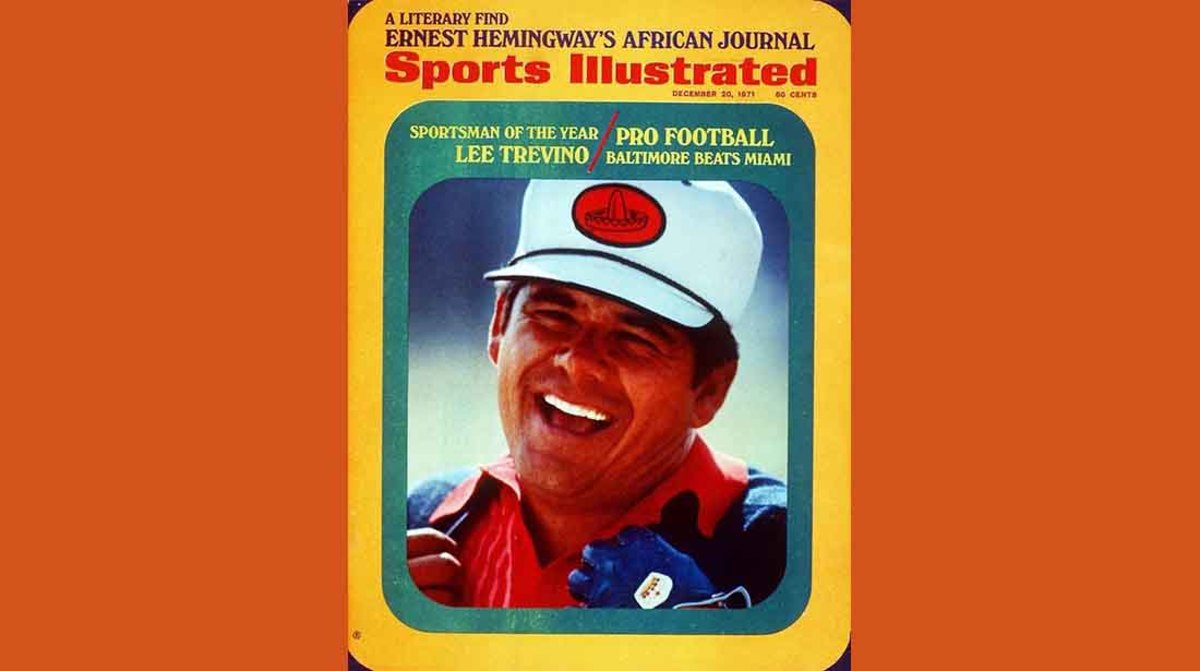
A Half-Century Ago, Lee Trevino Reaped the Fruits of a Recommitted Game
- Author: Dan O'Neill
ST. LOUIS — Fifty-plus years changes a lot. Lee Trevino still walks into a shot, but the gait has endured four back surgeries. Trevino still has a full head of hair, but the bristles are snow white not jet black. And Trevino still pounds golf balls for two to three hours each day, but at age 82 he’s not preparing for tournaments.
The one thing 50-plus years hasn’t changed is the charm. It still arrives like a landslide, all encompassing, with the sparkling eyes and folksy wit. Trevino isn’t always engaging, but when the switch gets flipped, 50 years may as well be five minutes. It’s still there, big as all outdoors, bright as a flash bulb, full of one-liners.
“I can’t wait to get up in the morning just to hear what I have to say,” Trevino says, as he has before, punctuated with half-moon grins and laughter.
Trevino had a lot to say back in January 1971. He was talking to a young reporter in Seaside, California, feeling good about his game and the year to come. The switch was on, the voltage was high and he became Babe Ruth pointing to center field, Joe Namath promising a Super Bowl , Muhammad Ali predicting a round.
He told the reporter, without a flinch, that he had every intention of winning both the U.S. Open and the British Open . “I just had a feeling that 1971 was going to be my year,” he remembered.

Lee Trevino, 1971 Sportsman of the Year
Trevino won three times in 1969 and 1970, stuff that hardly requires revision. But two of the wins were in one place — the Tucson Open. And after winning a U.S. Open at Oak Hill in 1968 — beating Jack Nicklaus by four strokes, Trevino whiffed on his next eight majors.
Players of Trevino’s ilk — cloth that features six major championships and 29 PGA Tour wins — measure success one major at a time. Particularly maddening for the “Merry Mex” was his retreat at the 1970 British Open, where he surrendered a two-shot lead in the final round at St. Andrews.
“I didn’t play extremely well in 1969 and 1970,” Trevino said recently while in St. Louis to promote this week's Champions Tour Ascension Charity Classic at Norwood Hills Country Club, where he'll play Saturday in a celebrity exhibition. “I kind of forgot that what got me there in the first place was hard work. So I started back working again really hard at my craft.”
He also embraced an impromptu pep talk from Nicklaus, who approached him that spring in the locker room at the Doral Eastern Open. The “Golden Bear” didn’t tell his adversary anything he didn’t already know, but he told him something he needed to hear.
“He sat down next to me and he said, ‘You don’t know how good you are, you can win anywhere,’” remembered Trevino. Lack of conviction was never an issue. But when the best player on the planet tells you you’re good, it’s kind of a big deal. “It meant everything; I’ve never forgotten it,” Trevino added.
During the next two seasons, he proved it. He won six times in 1971, which included an unprecedented hat trick. He captured a memorable U.S. Open at Merion, beating Nicklaus in a playoff after cracking him up with a rubber snake on the first tee. Two weeks later, he captured the Canadian Open, a title he would win three times. A week later, he won the British Open at Royal Birkdale.
Twenty days, three Opens, premonition validated.
He became the first to win the three national championships in the same year — a feat later equaled by Tiger Woods (2000). He became the first to capture U.S. and British Opens back to back since Ben Hogan in 1953, and he became Sports Illustrated 's "Sportsman of the Year ."
Who saw that coming? Well … he did.
“Well, the U.S. Open was at Merion, and I knew a little something about Merion,” Trevino explained. “I had played there before. I knew it was not a big golf course, which I liked. It had two par 5s, and that was all, and it was par 70.”
Trevino also acknowledged help from a rain delay during the playoff, which softened the greens and made them more accommodating to his low-approaching shots. Meanwhile, in July 1971, the British Open he had acquiesced a year earlier was staged at Royal Birkdale, a course that featured five par 5s. But there was a quid pro quo.
In ’71, players still were allowed to employ the “British ball,” a pill that was 0.06 inches smaller in diameter to the USGA version. The small ball was outlawed at the British Open in 1974 before the R&A and USGA standardized the larger ball altogether in 1990.
Until then, those who normally followed USGA guidelines could choose to play the smaller ball in the British Open. Like Trevino, most did, believing it provided slightly more distance and workability in the wind. More distance and workability were music to the ears of a virtuoso ball-striker.
“Anytime I can reach all the par 5s, I’m a pretty dangerous guy,” Trevino recalled. “I can play the par 3s and the par 4s. My problem was playing against long hitters who could reach the par 5s in two, especially Nicklaus. He could reach all five (at Royal Birkdale), but that’s OK. I don’t mind that if I can reach them also.”
Again, Trevino took a lead into the final round and this time he made it stand, beating Taiwan’s Lu Liang-Huan by a shot to add the third Open to his trifecta.
That set the table for 1972, a triumphant repeat at Muirfield and a follow-up season of four more wins. The year got rolling with a win at Memphis in May, then a tie for fourth behind Nicklaus in the U.S. Open at Pebble Beach. Nicklaus appeared unstoppable at that point, having also won the Masters in April.
With consecutive majors, Nicklaus arrived in Scotland staring down a Grand Slam and carrying the “man to beat” label at Muirfield, where he won the previous British Open gathering in 1966. He was at the height of his powers, the reigning champion of the Masters, U.S. Open and PGA — which in ’71 had been played in February. He was at the height of his intimidating powers. But nothing intimidated Trevino, not nobody, not no how.
“I wasn’t intimidated too much with anybody,” Trevino said. “I learned a long time ago, if I looked at a golf course and I felt I could beat it, I played for a score, not for an individual. I can’t help what the individual does.
“I played — not conservative — but I actually played the golf course. I figured out the percentages and I shot the best score I possibly could. If it wasn’t good enough, it wasn’t good enough. Nicklaus did the same thing. Nicklaus could actually look at the golf course and tell you almost to the stroke what was going to win that major championship.”
That summer at Muirfield, the score was 6-under-par 278. Trevino shot it, holing out from off the green four times during the championship, including famously on the 17th hole of the final round. Nicklaus shot 279, one shot shy.
That scenario played out once more in 1974. Trevino won the PGA Championship at Tanglewood Park in North Carolina. The previous year’s champion — Nicklaus — finished one shot back, runner up to Trevino for the fourth time in a major championship. That is, if not for the talkative Texan, Nicklaus’s spectacular career would include 22 professional majors instead of a record 18.
That brought another twinkle to Lee Trevino’s eyes, another wide smile to his face. It’s been 50-plus years now, seems like five minutes.
Trevino, 81, passionate as ever for golf
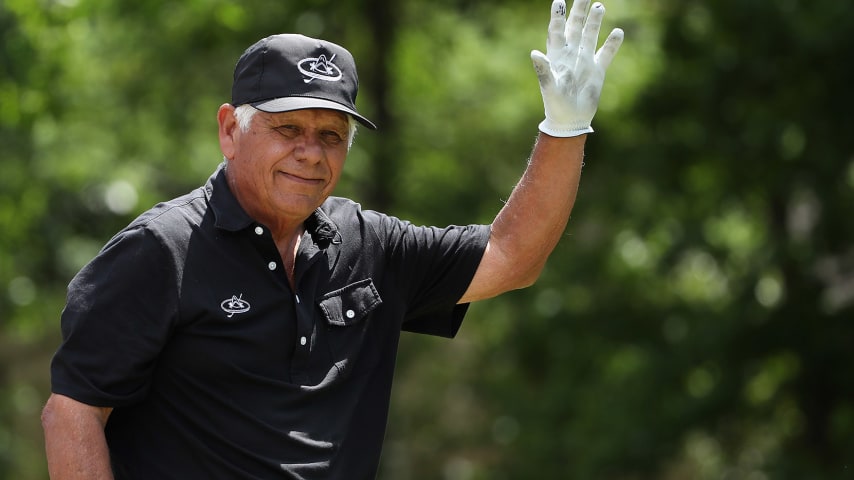
THE WOODLANDS, TEXAS - MAY 04: Golfing legend Lee Trevino waves as he is introduced during the '3M Greats of Golf' at the Insperity Invitational at The Woodlands Country Club on May 04, 2019 in The Woodlands, Texas. (Photo by Christian Petersen/Getty Images)
Change Text Size
DALLAS – Lee Trevino might have been an engaging, welcome personality on the PGA TOUR to its passionate fanbase. But that wasn’t the impression Trevino got from at least one of his fellow competitors.
“There was a guy I never got along with very well, a pro, who was OK but didn’t seem to like me,” Trevino recalled. “I don’t know what his problem was, because I never bothered him.”
So Imagine Trevino’s surprise when the unnamed player approached him from two fairways over during a practice round prior to the 1971 Cleveland Open. A week earlier, Trevino made waves by winning his second major championship at the U.S. Open, beating the legendary Jack Nicklaus by four strokes in an 18-hole playoff.
What the player was about to say to Trevino was anyone’s guess.
“He walked over two fairways to shake my hand and hug me,” Trevino said, laughing. “He said, ‘We finally got somebody that can beat him.’”
It didn’t matter that Trevino had a darker skin complexion than most of his peers, or that his Hispanic last name—the surname Trevino traces its origins to Spain—always stood out on a leaderboard.
What mattered instead was the respect Trevino earned on the golf course. Beating the revered Nicklaus—in a major championship for the second time, no less—was a monumental achievement worthy of respect. Anything else was irrelevant.
“When he walked away, I got to thinking about what he said,” Trevino said. “I thought, ‘You know what? I’m finally one of the boys.’ I got very comfortable being out there.”
Trevino would go on to win 29 times in total on the PGA TOUR, including six major championships, to cement his status in the World Golf Hall of Fame in 1981. More importantly, Trevino, nicknamed “SuperMex,” became an inspiration to point toward for other minorities looking for their own entry into golf.
That message endures today, as Trevino, now 81 years old, continues to be outspoken about growing the sport at the junior levels. He desperately wants youth programs such as the First Tee to find unlimited, free access to golf courses throughout the country.
“The only thing that I can do now is be vocal about it, which I’ve been,” Trevino said. “They can be done right. It would be extremely successful if they had their own golf courses, whether it’s nine holes or 18, and their own driving range when they can hit whenever they want to.”
“I would have mowed it and had it out there to let these kids play on all day,” he continued. “Cow pasture pool is what we called it. That’s how I learned to play, in the middle of a field.”
Trevino’s passion for the game is evident in his voice, even all these years later. He jokes that people can set a watch to his morning routine, which still includes two hours of daily practice time on the range.
He and his wife, Claudia, have largely been locked down inside their Jupiter residence since the covid-19 pandemic began.
That’s meant more time for Trevino to find his swing speed again.
“It’s instilled in you. it’s just a disease, really,” he said. “If you really love this game, it’s like drugs. I’ve been in this house now since the pandemic hit, but I’ve got a beautiful home with a big gymnasium and the whole thing. So I don’t go anywhere. I’ve got the greatest cook in the world (in Claudia).
“I’m working on some swing speed, and I’ve got some rubber bands, balls and weighted clubs. I’m going to end up killing myself!”
The increased time at home has also given Trevino more opportunities to watch the growing Latin American contingent on the PGA TOUR. Three Latinos— Joaquín Niemann, Sebastián Muñoz and Mexico’s Abraham Ancer—qualified for the season-ending TOUR Championship this year.
Niemann and Muñoz both claimed victories this time a year ago, and Ancer announced himself as a competitor worth monitoring when he became a key cog in the International Team’s near upset of the United States at last season’s Presidents Cup.
“They’re doing extremely well,” Trevino said. “As a matter of fact, Carlos Ortiz (of Mexico), I just saw him the other day. Sebastián is doing extremely well, too.
“Ancer? Fantastic. Not a big guy, but extremely talented short game. He figured out that he wasn’t a bomber, so he was going to kill them someplace else. That’s what I did. I wasn’t a bomber but I was a heck of a wedge player and could putt a little bit. You can bring the guys down if you’ve got some tricks somewhere else.”
Lee Trevino is as dialed in as ever on the game of golf. And that’s a good thing for all of us.
“My personality came from serving people,” Trevino said. “Every job I ever had I was serving someone. That’s what we were taught to do, and it’s never changed. I love people.”
Zurich Classic of New Orleans
TPC Louisiana
Golf Digest Logo
Q&A With Lee Trevino
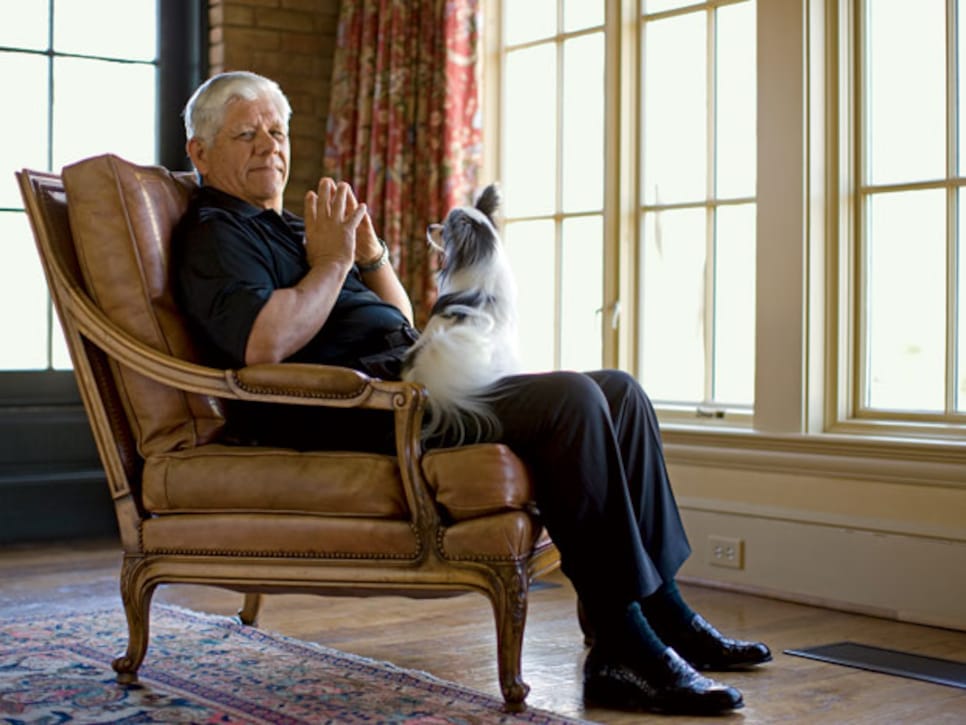
Lee Trevino with Minnie, photographed at home in North Dallas by Walter Iooss Jr.
Lee Trevino is out on the manicured grounds of his expansive French-colonial mansion in North Dallas when a visitor is admitted through the front gate. Trevino is wearing shorts and a T-shirt, kibitzing with his two Papillons, Minnie and Lulu, and holding a custom-made putter after filling it with lead. At the moment, he's thinking of doing the same to a beaver that has been taking chunks out of his property.
"All my life living around here, never seen a beaver," says Trevino, on the verge of turning 70. "I've been doing research on them, but it's been hard to find him. I know one thing: He never stops working. Tough little dude."
Trevino could have been describing himself, for no golfer has ever come farther on industriousness and grit. After picking cotton in Texas fields when he was 5 years old, dividing his golf baptism between the caddie yard and the range, beating all comers on a par-3 course with a taped-up Dr Pepper bottle, and then becoming a man in the Marines, Trevino joined the tour at 27, a folk hero in the making. In his second year he won the 1968 U.S. Open, the first of four times Jack Nicklaus finished second to Trevino in a major. Trevino would win 29 times, including six majors, on the PGA Tour. Amid the success, he lost two fortunes and then lost his game after being hit by lightning. But he fought back with a second act that included winning 29 more tournaments on the Champions Tour.
These days, Trevino plays only a few tournaments and shoots over par more than he's under, but he's more engaging and entertaining with fans than ever. His focus is on his wife of 26 years, Claudia, and their children, Olivia, 20, a drama major at Southern Cal, and Daniel, 17, who lives at home and is on track to play college lacrosse.
Golf Digest prompted Trevino's mercurial mind to reflect on such things as his Dickensian background, Nicklaus, Tiger Woods and occasional golf partners George W. Bush and Condoleezza Rice. In the process, Trevino issued an impromptu manifesto on the state of golf. He also had a message for Paul Goydos, who in defending the current era of players opined that "there are 10 Lee Trevinos" on tour today.
"Tell him you were at my house," Trevino said with a smile, "and you tell him to send me the list of the 10 guys out there who have won six majors and 29 tournaments. Give him my address."
RELATED: The most insufferable golf sayings that needed to die yesterday
Golf Digest: What's the story on this house?
Lee Trevino: I was meant to be in this house. I grew up about five miles from here. I used torabbit hunt around these creeks as a kid. There wasn't nothin', just cattle and ranch land. This house was built in 1939, same year I was born. And we'd come down here, see this house, and we thought it was a castle. Never seen anything this big. Then when we moved back to Dallas a few years ago, this house was Claudia's favorite of the ones she looked at. We drive up, and I say, "I've seen this house before." She says, "When? Where?" So I told her the story. I'm back to my roots, man.
Those roots included a lot of tough times. Is it hard for you to look back?
I never think of yesterday. Can't do anything about it. I'm a positive guy. When you really deep down look at it, we go to bed every night, get up every morning, stay here for 70 or 80 years, and then we die. What the hell were we doing? [ Laughs .] Claudia taught me the answer: Those two kids. To make them the best people, so they'll be productive, help others.
You know, I'm going to be cremated. I've got two steel spacers in my back, and I have a steel plate in my neck with six screws. I told Claudia, when they deliver the ashes, I want her to reach in the urn, and if she doesn't find two spacers, a plate and six screws, it's not me. Claudia will spread my ashes somewhere. St. Andrews would be great.
What does hitting 70 mean?
Nothing. A number. Actually, I'm making it a positive. I like to go to the gym, and practice, and shoot these scores with my friends, and people say, "I can't believe you're almost 70."
RELATED: Lee Trevino's My Shot interview
Have you left competitive golf behind, mentally?
Oh, yeah. I left that quite a while ago. When I realized I couldn't win, that took everything out of it. The only reason I go out on the Champions Tour is to talk to the guys, have some fun. I still get all the people in the gallery walking around with me because they know they're going to hear some stories.
How do you know when your competitive days are over?
Every shot feels like the first shot of the day. If I'm on the range hitting shot after shot, I can hit them just as good as I did when I was 30. But out on the course, your body changes between shots. You get out of the cart, and you've got this 170-yard 5-iron over a bunker, and it goes about 138. [ Laughs .]
How much recreational golf do you play?
Not a lot. I play with an old friend, Wendell Condit, a car dealer I've known over 50 years. We play at Diamond Oaks in Fort Worth, not a fancy course. Greens probably about a seven on the Stimpmeter. My partner is Orville, a bail bondsman, and then we've got John, a heavy-equipment operator in Alaska. They treat me great. I'm just one of the guys. That's how I like to play golf.
Any other partners?
I love to play with my wife. I play with my son, Daniel, who has a great game. George Bush—the son—and I have been good friends for a long time. He lives right down the road. He called the other day; he's going to go play some golf. He's about a 12-handicap, but he can be good when he practices. We haven't been to the range yet, but I'd like to help him. I took him and Condoleezza Rice out to Dallas National not long ago. She loves golf, is very competitive, and a good athlete. We had a great time.
You've said Barack Obama's election last year was emotional for you.
I cried. I thought the country had arrived, to elect a black president. I didn't think I'd see it in my lifetime.
Was the election personal in terms of race and your background?
Sure, I've felt racism. I think everybody has prejudice. When I was growing up, the dark Mexican kids weren't allowed in the public swimming pool in Dallas. My light-skinned friend got in, and he laughed at us. It didn't seem like a big deal, because we didn't know any different. So I never ran into anything that actually scarred me.
RELATED: He wanted to talk to the president, so he stormed the gates of Augusta National
Growing up, did you have a lot of fights with other kids?
Yeah, but back in our day, fights were nothing. There were no weapons. Now it's shoot somebody or cut somebody. It was a different story back then. The drugs weren't around. They probably were, but they were for people with more money than us. Never messed with them.
What was the caddie yard like back then?
We had about 80 caddies at Glen Lakes Country Club. I lived right next to the course, across from the seventh hole, in a little house with my grandfather, my mother, my uncle and my two sisters. No running water, no electricity. There were a couple of white caddies, maybe three Mexican kids. Everyone else was black, all from Second Avenue, because that was the only place blacks could be in Dallas at the time. Sometimes, three or four of them would come over and sleep on our porch so we'd be first off in the morning.
All my life I had a rapport with black caddies. Herman [Mitchell, Trevino's longtime caddie ontour], all of them.
My mentor at Glen Lakes was a guy called Cryin' Jessie. I took care of him until he died about four years ago. He was a caddiemaster around here forever, but when I was 8 years old, he took me under his wing, taught me how to caddie, kept me out of trouble, made sure nobody messed with me. He taught me that caddieing is basically a bunch of bull----. Always tell the player that he's swinging good, make an excuse for him, keep him positive. And just get in the game with him, give him a little information.
You were a good caddie, and you beat the other kids in golf. Did it occur to you that you might have special ability?
Hell, no. When you're poor, you know nothing about the future, you know nothing about the world, nothing that goes on outside 300 yards around you. See, it's not very hard for me to understand people in some of these small countries that are isolated, that have dictators, and nobody lets them have anything. Think of North Korea: There are people in those mountains who have no idea what the rest of the world is like. So why dream? What are you going to dream about?
But you were good at everything you did?
I thought that was just the way you were supposed to be. In those days, nobody ever told me "Good job" or gave me a compliment. You did it until you did it right.
Why were the Marines so important to you?
The Marine Corps was the greatest thing that ever happened to me. Back when I went in, they tested to see if you were tough enough to be a Marine, and to stay there. So they would beat you up all the time. The drill instructors would hit you with sticks, and they'd kick you, they'd knock you down. I got hit in the jaw the first 15 minutes I was there. One of the drill instructors said I wasn't being still. We were standing at attention, and it was the receiving hall in San Diego. And the guy hit me right in the mouth with his fist. Knocked me down. I got back up and just stood there, at attention. It wasn't going to discourage me. I'd been hit harder than that at home.
The thing is, I was looking for discipline. A lot of kids today who end up getting in trouble and going to jail, they actually want discipline. See, discipline is actually attention, you know what I'm saying? That's what I lacked. If they told me I had to go back in the Marines now, hell, I'd love it.
Yet you dropped out of school in eighth grade. Why?
I was pretty smart, but I had no support cast. Nothing at home and nothing at school. Everybody was from a farm, and if you didn't come to school, nobody gave a damn.
When you got out of the Marine Corps, golf was your main thing?
That was when I really started improving. I figured out how to keep the back of my left hand aimed at the target through impact, just holding on to that thing, a blocker, and I could really play. I hit the ball dead straight. People thought I faded the ball because my body was aligned about 30 degrees left of the target, but when the swing starts down, my body goes toward the target. So I was extremely straight.
At the time did you have a long-range plan?
No, I didn't know anything about the tour or that you could make a living playing golf. I saw Jack Nicklaus at the 1963 PGA that he won at the Dallas Athletic Club, but I had never heard of him. I was just trying to beat the guys I played with at Tenison Park. I wasn't winning a helluva lot of money, but I was paying rent and having a good life. I think the most I ever won in one day was less than $100.
It was success to me, but it made me like Dracula: Once I tasted a little bit of blood, I wanted more. I guess I was smart enough to understand that if I was going to get more, I was going to have to give more. Getting out there and doing it. Mastering it. Figuring it out on your own. And the more I practiced, the more I could see the improvement. In leaps and bounds.
Because I learned how to teach myself. When you're doing something really well, if you don't have it on film where you can see it, you'd better be able to close your eyes and see it, so you can dissect why you're doing that. I didn't have any film, so my stuff was all in my mind. See, if something happened to me in the middle of a tournament, I didn't have to call Butch Harmon or somebody to say, "What am I doing wrong?"
When I learned a shot, I wanted to know why. And I would test things in practice until I knew exactly why. That's how I earned my confidence.
What's so remarkable is that because you stayed around Dallas, you never really tested your game against the best players. You got out on tour by qualifying for the 1967 U.S. Open at Baltusrol and finishing fifth. As soon as you did, you had great success, ending up as the Rookie of the Year. Were you surprised?
I didn't know what to think. For a long time I had this doubt that I belonged because of where I came from. And I would hear a lot of pros say I couldn't last with that swing. My safety net was work.
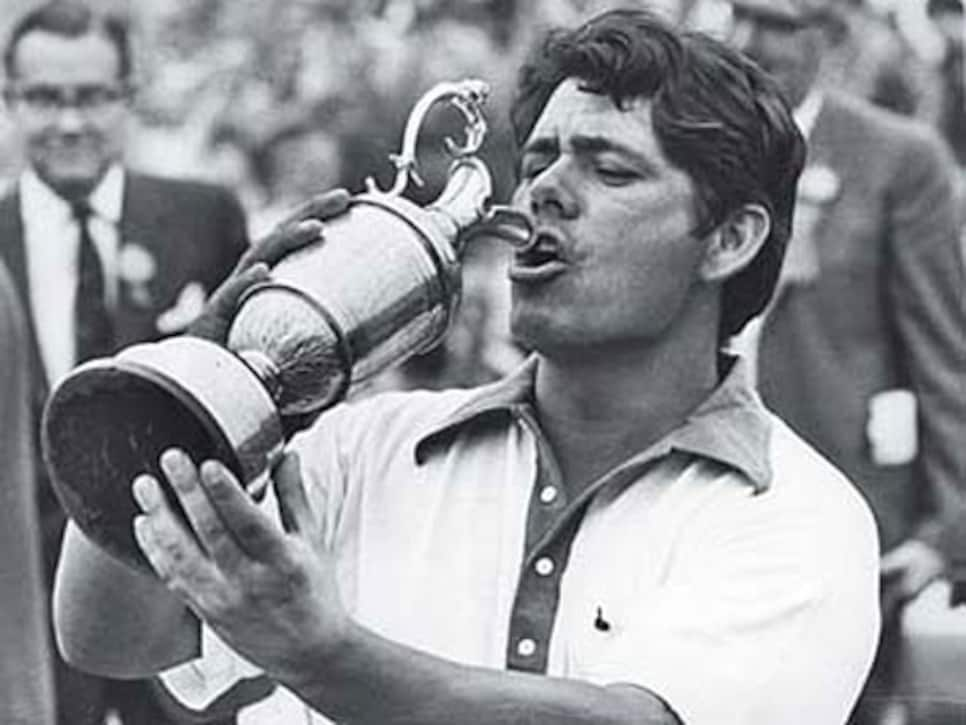
What's your main memory of winning the 1968 U.S. Open at Oak Hill?
Oak Hill, it was kind of like playing at home in Dallas. No one noticed me; no one cared. They actually thought I was with the grounds crew. When I finished playing the first day after shooting 69, I sat by the practice green in a golf cart drinking a beer, and not one person came by to say hello, how you doing, nice round or anything. They had no idea who I was. Hell, I had only 13 clubs in my bag—I carried only one wedge—and one of them was a Bert Dargie 6-wood. The same thing happened after the 68 in the second round. Of course, that's the last time it happened.
A lot of stories from those days involve drinking, which you quit about 20 years ago. Did drinking hurt your career?
I don't think so. I could drink for seven straight days and then not touch a drink for weeks. I remember Albert Salinas [former business associate] traveling with me, and I was drinking scotch and soda, and every night we'd have two or three or four, get a little buzz on, and I'd go to bed. Never bothered me because I ran a lot to stay in shape—usually three miles at an eight-minute pace—although I might have had three beers right after, so in a way I ran to drink. I remember we were in Tucson, and I told him, "I'm not going to drink another drink until I win a tournament." He says, "Good." And that week I won. [ Laughs .]
Too much alcohol might have hurt you at the 1968 PGA in San Antonio.
That was an accident. That was when Gatorade first came out, and they put a case of it in my room. I was right there by the ninth green. And we were having a party Saturday night, and they were mixing tequila with this stuff, and it was pretty good. And they had all this Gatorade in the refrigerator in a big pot. I went to bed early, because I was in the hunt, only a stroke or two off the lead, and I got up thirsty about 3 in the morning. And I saw this pot of Gatorade in the refrigerator, and I started chug-a-lugging, not knowing there was tequila in it. I woke up blind drunk. It was a scorching-hot day, and I don't know if I ever felt so bad on a golf course. I think I shot 76.
Winning the 1971 U.S. Open at Merion, beating Nicklaus in a playoff, changed your self-image?
That was the pinnacle, the turning point of my career. When I beat the best in the world—not only tied him in four rounds but then beat him in a playoff—that was when I actually believed in myself for the first time: 1971.
RELATED: 15 ways to be a faster golfer
Jack says you were the toughest to play against head-to-head because he knew you were always going to be in the fairway. Could you sense he felt that way?
No question. That can wear on you. I didn't make a lot of mistakes. But really, it was reverse psychology. That's why I beat him. Because every time we'd lock horns, I know he was thinking, No way this guy should beat me. . . . No way do I want to lose to this guy. And that's all he's thinking about. Me, I'm not thinking about anything. I'm not supposed to beat him.
Nicklaus indirectly helped you win the British Open the next month.
I loved Royal Birkdale. I had played it the year before, and it had five par 5s, and because we played the small ball then, I could reach all of them in two. And I just could not wait to get there and play it. Because for the first time in my life, I knew what Jack felt like. In those days, when Jack parked his car he was already four under.
You won the British Open again the next year, 1972, at Muirfield.
Well, my chili was really running hot before I hit that chip on 17. But I hadn't quit. I was aiming at the hole, and it was a simple shot. I was just trying to hit it before I got any hotter. I was actually inside [Tony] Jacklin, but being polite, he asked me if I wanted to chip. So it goes in for par, and he three-putts for bogey. And then I piped my drive on 18 and closed it out.

Tony has said that destroyed him as a player, and that's something I've never understood. Because he wasn't from uptown, either; he didn't grow up with anything. But he convinced himself that the golf gods were against him.
How did you deal with tournament pressure?
Pressure was never really there for me. It was there, but it wasn't. Where I came from, and where I'd gotten, I was playing with house money.
You did confess to feeling pressure at the next major you won, the 1974 PGA at Tanglewood.
I was playing with Jack, and I three-putted the 17th from 30 feet to have only a one-stroke lead. Now I'm tense, but what gave me a little life is that Jack took out 3-wood on 18. I thought, What the hell is he doing? Because if he had hit one of his bombs down there, it would have made my tee shot a lot harder. But I took out my driver and hit it way past him. He hit like a 4-iron, and I hit 6-iron right over the flag, about an 18-footer. Mine is downhill—and I leave it about three feet short. That was the first time in my life where I really felt a lot of pressure. I said to Jack, "I've got to finish, or I'm going to have a heart attack." And he started laughing. I put it in.
The next year you got hit by lightning on the course during the Western Open.
That changed everything. I don't know how good I would have been if that hadn't happened. I never was the same. It led to an operation on my back in 1976, and once they cut on you, you're never the same. You can't swing hard at it, can't dig it out of the rough; uphill and sidehill lies, you have to be careful. And you lose speed. In a way, you lose everything.
I'm proud of 1980 because I won the Vardon Trophy, but I hurt my back again, and that's when I went into the television booth.
Winning the PGA at Shoal Creek [in 1984] was kind of a miracle. I was 44, bad body. But I drove the ball great there. Going into the last round, on the practice putting green, I broke everyone up. Herman's got the gout, he's in a bad mood, and we're walking to the first tee, and some guy in the gallery yells at me, "What do you feed that caddie?" I look at the guy and say, "Rednecks!" And Herman says, "And I'm getting hungry, too!" That's when the people in the gallery said, "You know, that guy's all right."
Where does your humor come from?
I think it was from having a tough early life. At that time you didn't want anybody to know it. If you were talking all the time, nobody could ask you a question.
You're close with comedian George Lopez.
George and I grew up a lot alike. His dad left him when he was like 1. It wasn't a happy childhood. And George has kind of been like me, went on his own for most of his life. Where I was playing and hitting balls on the public courses, he was doing comedy on the street corners and the little bars. He was looking for something in life, and finally he found a little happiness and a little security. He's got a wife who gave him a kidney. You can't measure that kind of love. I'm like a dad to him. He calls me all the time for advice and stuff. He comes to Dallas, he calls me. I go to L.A., I call him. We talk all the time.
RELATED: Undercover Tour Pro: The Single Life
We're currently witnessing the greatest sustained run in history. You're a big fan of Tiger Woods. Why?
This guy is it. He is I-T . He is No. 1. Nicklaus was my man. I always loved Nicklaus' game. But Tiger, man, I can't wait to turn the tube on. I study him. I love the way he plays. The way he carries himself.
We've both done the same things. Played golf, hit balls. Win a tournament, then out there Monday morning pounding them sumbitches. Win another tournament, out there another Monday morning. Messing with clubs, working on this, working on that. Finishing a practice session, going home and all of a sudden saying, "Oh, I just thought of something," and going right back out there. I did that a lot. He's living the same thing.
Hard question: Who's better, Jack or Tiger?
Well, there's no way you can put the label "better" on Tiger until he breaks Nicklaus' records. He's fixing to beat Jack in total tournaments won [behind Sam Snead]. In the major championships, it remains to be seen. But it's just a waiting game. It's going to happen.
If Tiger had been playing in Nicklaus' era with that equipment, I think they would have beat each other up. It would have been much closer than this Mickelson-Tiger thing. There's no rivalry there; Phil can't handle Tiger consistently. Nicklaus could have handled him. Tiger wouldn't have beaten Nicklaus every week. Nicklaus would have still won his majors and still won his golf tournaments.
The problem would have been that if you had those two, hell, there would have been nothing there for me. Or Miller or Watson. We wouldn't have won anything. [ Laughs .] But to answer your question—and I bite my lip every time I say this—Tiger's better.
The only weakness that Tiger has is his driver. But he overcomes it with his short game. If Jack Nicklaus had driven the ball like Tiger, with the short game Jack had, he might never have won a major championship. Jack was a mechanic with his driver, great with his irons—especially long irons, high—and he was an excellent putter. He wasn't very good with his short game or the bunkers. But Tiger from 100 yards in, with the wedges and the chipping and the creativity, is as good as anyone who has ever lived. Usually the harder the shot, the better shot he hits. That makes up for so much, and that's where Tiger gets the edge on Jack.
Where do you think Tiger is with his game?
As much as Tiger works at the game, as good as he is and with all the shots he knows how to hit, I can't believe he can't figure out a way to drive the ball straight. The key to golf is the driver. If you don't have the key, you can't start the car. No. 1, I think he's trying to hit it too far. He doesn't need to. No. 2, I don't think he should be playing graphite. I think he should find a lightweight steel, and I think he should go back to a 43¾- or 44-inch driver. It would give him better control. If he hits it down there 290 in the fairway, he'll win every single golf tournament. The only reason people beat him is because he sprays the driver.
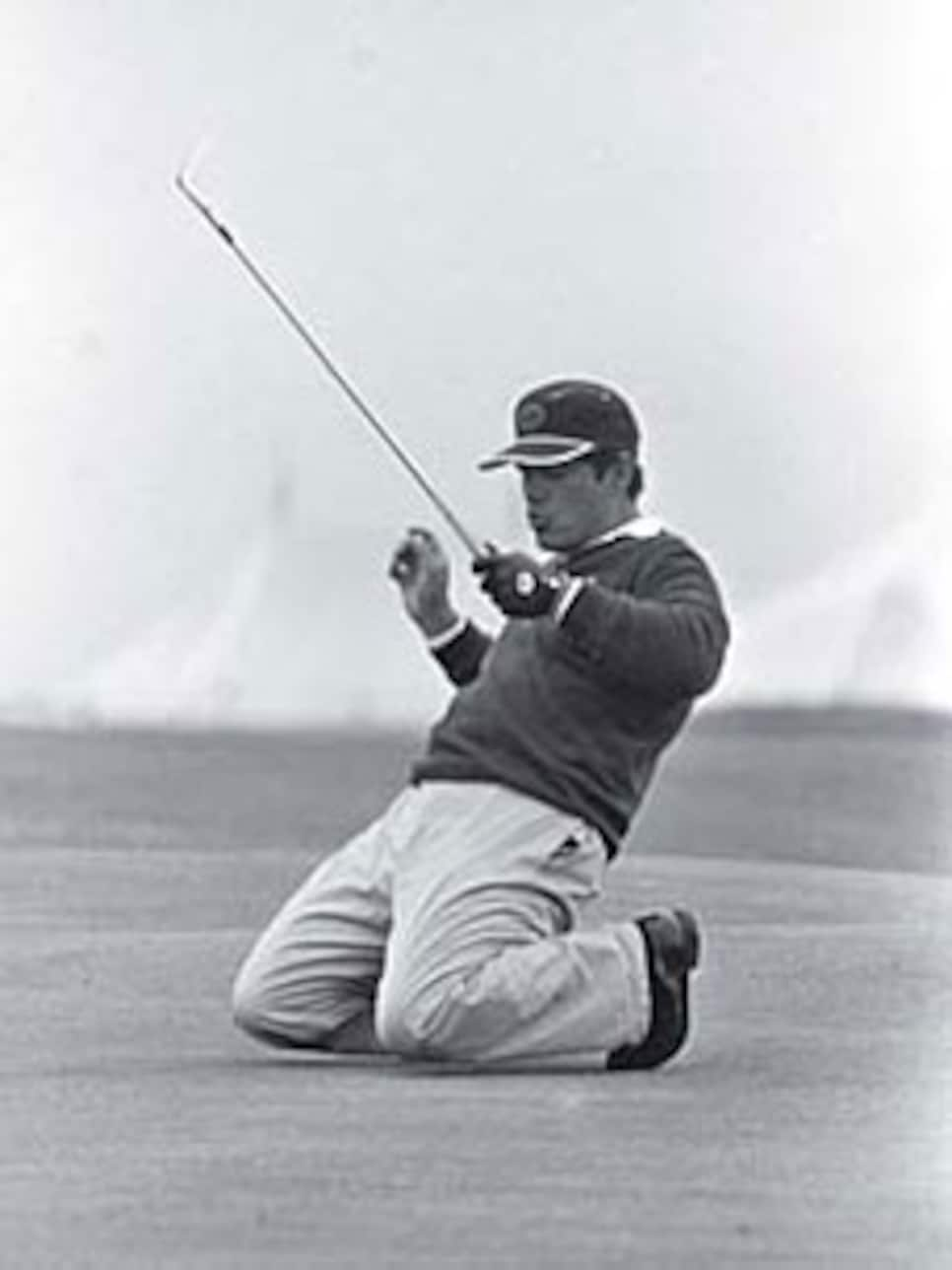
Would you suggest any swing adjustments?
Well, since his operation he's getting a little more flex in his left knee at impact, which will help with his control. But I'd like to see him go with a power fade off the tee. Strengthen his grip, push his hands a little forward at address and really hold it off through impact. And then he can hit it as hard as he wants to, and it'll fade just a little bit off the left rough line every time. All Tiger has to do is look at Paul Azinger. When Azinger is on the range hitting balls, Tiger should wander over and take a look.
Do you think Tiger might frown on a power fade as a compromise?
He might. With a driver, there's no distance limit, and Tiger probably doesn't like accepting a limit. But I think if he had a yardage in mind, like he does with the other clubs, it would help him. I mean, see how accurate he is with a 6-iron, but if he tried to hit it as hard as he can, he wouldn't hit a green. With every other club, he has a specific distance, and he should do the same with the driver. Make it a controlled golf shot, not a blast. I'd love to see him drive the ball straight. Damn it, I don't see any reason he can't.
You say he's putting too much pressure on his putter. Do you see it taking a toll?
It looked to me at the PGA that he was popping the putt. He used to stroke the putt and close the toe a little. And he very seldom missed many putts to the right. He's beginning to miss more putts to the right because when you pop it, you can't close the face, and you block it. That's what I saw in the last round at Hazeltine. I thought he was popping it, instead of loving it, you know. You've got to love a golf ball when you putt.
What about Tiger's era of top players versus the ones you played against during your prime inthe '70s?
Today's players swing faster than we did. I think they're healthier, I think they're stronger, I think they're bigger, and I think they're deeper. In other words, there are more good ones. But as far as who had more of the best players, I believe my group was better. No question.
What was the thing you guys did better?
Because we learned the game differently, on bad grass and good grass and a lot of bad lies, we had more shots. When we got those manicured golf courses, the game seemed so easy. That's what happened to Johnny Miller when he'd go crazy low in the desert. So I don't think the best players are as complete today, simply because they didn't have to learn what we had to learn. Being a shotmaker was a forced necessity. Today's golf laboratory is sterile. It doesn't call for anything.
Which of the young players have impressed you most?
There are a lot of players out there who are impressive. This Sean O'Hair can really play. Zach Johnson can really play. Anthony Kim can play, if he quits reading the newspaper about how great he is. He could be a hell of a player. This guy [Paul] Casey from England, he looks flawless to me. Stewart Cink is very good.
The problem is that you've got one guy who outshines them so bad, they suffer in comparison. And I don't know if they're saying, "The more I practice, the worse this guy beats me."
But your contemporaries didn't seem to get as discouraged by Jack?
Jack was beating us by only one or two shots. Hell, he wasn't beating us by eight or 10 or 12. [ Laughs .]. If Jack had been beating us by 10 or 12, we'd have gone to the bar and said, "What's the reason to practice?"
What role have the advances in equipment played in today's game?
The USGA let it get away a little bit. They made a mistake on the ball. They lost control ofthe spin when they got away from V-grooves. The driver heads, they let get too big. The thing is, they can get it all back. Because they're rolling back the grooves. That opens the way to roll back anything.
Are you worried about the game in general?
I'm very worried about it. And the main reason is that with the new golf courses, everybody wants to build a monument to themselves.
They've gotten away from basic golf courses: flat land, bunker here, bunker there, green over there, tee close to the green. And then just play.
Getting back to your career, why did such an extrovert become such a recluse?
At first I liked the attention. I was very friendly, I was approachable, I loved to drink beer and raise hell in the hotel lounge. But a few things happened. First, the average fan thought he could come and ask me anything because I seemed like such a talker. But I soon found out it was the same thing all the time: "I'm having trouble with my putting." . . . "Check my grip out." ... "How's Arnie?" ... "Is Jack a good guy?" ... "I want you to meet my brother-in-law."
Then they'd expect you to say something funny. People took advantage, and I don't blame them. I set myself up. Then, I didn't have any good business guidance, and I said yes to too many people. See, I never wanted to shortchange my practice, because that was the foundation of my game. So when things started cutting into my time to beat balls, I resented it.
So I ran and hid, kind of set the precedent for the modern player. After I got the car, I went straight to a hotel where no one else stayed, and then I stayed in the room. I'd drive in the back, go in through the back, go to the room, never leave it. I'd go to the hotel at 4 or 5 in the afternoon and stay there until 9 or 10 the next morning. It was the pattern I repeated my whole career. But of course I'd hear the people whispering: "He's not the guy I thought he was." It hurt, but I just left it there.
You finally went to a psychiatrist to better deal with it?
Claudia found him. We had just gotten married. I told her I couldn't take it anymore. I had two sessions with him, only about that issue. I was getting edgy and jumpy, and I was going to end up in a fistfight. He said, "It's just that people admire you. They actually want to be you. And for that one split moment, when you sign something for them, they can touch you, bam, that's meaningful. You did something for them." And I was fine with it. And I still am.
Why was it so hard for you to let people in?
From a young age, I've always done everything for myself. When someone offers to help me, my first reaction is always, Why would that person want to help me? No one did it before; why would they want to do it now?
The thing is, closing yourself off like that ends up hurting you. Life is much better when you have people pulling for you, and you have someone to do it for. I do it for my family. You go out there and try to play golf and shut the world out, your ass is doomed.
Even before I had kids, I wanted my friends, the guys I hung out with, to be proud of me for the way I played. Maybe I had more of that need because it wasn't really filled when I was a kid.
RELATED: Do tour pros cheat? Here's your answer
You've made sure to fill that need for your two youngest children. What are the lessons you try to pass on?
One thing I've told them is that your word is your bond. That once you've lost your word, you've lost all your dignity. So when you tell someone that you're going to do something, you do it. Regardless if it costs you. And it will cost you money sometimes, cost you time. But you gave them your word. And I said the only other thing that I wanted them to remember was an old quote that I read in a newspaper, and it said, "Do the right thing when no one's looking."
The jobs I had when I was young, I would work harder when the boss wasn't there. And I know why. Because when he got back, I wanted him to be proud of me.
You watch a lot of golf on television. What do you think of the announcing?
I always liked Henry Longhurst. Peter Alliss is my favorite now. You know, less is more. When I was on NBC back in the '80s, what was the sense in describing the shot after it was hit? Everybody could see it. We weren't doing radio. I think there's just too much talking.
You were still an active player then. Were you hesitant to criticize?
That's true. I didn't want those guys being angry at me. That's what happened to Johnny Miller in the beginning. He didn't really care if he hurt a guy's feelings or his mother's feelings. He basically said, "This guy's choking." But it got to the point where Johnny stopped going in the locker room. He was hotel to car to compound to tower to compound to car to hotel. That's the price. I tried to call it as it was, but never that a guy's choking. I might say, "He's got enough cotton in his mouth to knit a sweater."
If you were doing the job now, would you be different?
Oh, hell, I'd drown them now! [Laughs.] Because I'm too old for them to jump on me. You know they don't want to whup a 70-year-old man. But no, I'm not interested in it.
Not at all?
No. When Daniel goes to college, Mama and I will be taking some trips, three or four times year. For Claudia's 50th birthday last year, I took her to Rome for eight days. It was the greatest time I ever had. We took in everything: the Colosseum, the Vatican. We went to a mass where we were from here to there from the pope. We saw St. Peter's tomb. I've been all over the world, playing, but I've never really been anywhere. Never seen anything.
But you know, I got home last night after a week on the road, and I felt so good when I saw my wife and my son, and my two little puppies. I thought, Why in the hell did I leave?
This afternoon I'm going to wash my car and wash my wife's car. My puppies will be out there on the grass watching me. I'm enjoying a part of my life that I've never experienced before. It's really good.
This is the 127th Golf Digest Interview in a series dating to 1991. This article was published in 2009.
More from Golf Digest
Trending now.
Lee Trevino Info
Bio and career facts and figures for the golf Hall of Famer
- Famous Golfers
- Golf Courses
- Golf Tournaments
- Bodybuilding
- Cheerleading
- Extreme Sports
- Martial Arts
- Professional Wrestling
- Skateboarding
- Swimming & Diving
- Table Tennis
- Track & Field
- Other Activities
Lee Trevino was one of the other greats of the Jack Nicklaus era in PGA Tour history, a 6-time major champion whose career was interrupted by injuries suffered after he was struck by lightning. Despite that, Trevino's achievements place him among the game's greats.
Date of birth: Dec. 1, 1939 Place of birth: Dallas, Texas Nickname: Merry Mex

Tour Victories
- PGA Tour: 29 (view list)
- Champions Tour: 29 (view list)
Major Championships
- U.S. Open: 1968, 1971
- British Open : 1971, 1972
- PGA Championship : 1974, 1984
Awards and Honors
- Member, World Golf Hall of Fame
- PGA Tour money leader , 1970
- PGA Vardon Trophy winner (low scoring average), 1970, 1971, 1972, 1974, 1980
- PGA Tour Player of the Year, 1971
- Member, U.S. Ryder Cup team, 1969, 1971, 1973, 1975, 1979, 1981
- Captain, U.S. Ryder Cup team, 1985
Famous Quotations
• Lee Trevino: "I've been hit by lightning and been in the Marine Corps for four years. I've traveled the world and been about everywhere you can imagine. There's not anything I'm scared of except my wife."
• Lee Trevino: "There is no such thing as a natural touch. Touch is something you create by hitting millions of golf balls."
• Lee Trevino: "You can talk to a fade but a hook won't listen."
More Lee Trevino Quotes
Lee Trevino was the first golfer to win the U.S. Open , Canadian Open and British Open in the same year. Trevino did so in 1971. Only Tiger Woods has accomplished the feat since.
Lee Trevino Biography
Lee Trevino rose up from a hardscrabble youth to become one of the greatest golfers of his time, or any time. He did it by hitting millions of golf balls , and he did it with an on-course smile and a wit rarely matched in golf history .
Trevino was born into poverty and never knew his father. He was raised by his mother and his grandfather, a gravedigger. Lee began working at a very early age, toiling in the Texas cotton fields as young as age 5.
But when an uncle gave him a rusty golf club and a few beat-up balls, the young Trevino found his calling. He began caddying at age eight, sometimes attending school but more often working or practicing golf .
At age 17, Trevino joined the Marines and served four years. Following his discharge, he returned to golf, becoming a club pro in 1960. While at an El Paso club in the mid-1960s, the then-unknown Trevino battled the already famous Ray Floyd over three titanic days in one of the most legendary gambling matches in golf history. They came out even.
Trevino found his way onto the PGA Tour in 1967, and quickly established himself as one of the best. He won the 1968 U.S. Open , and from then until around 1974 was a dominant force. He won all but one of his six majors during that span, and four scoring titles. His 1971 U.S. Open victory is his best-known, as he defeated Jack Nicklaus in an 18-hole playoff for the win. Trevino nipped Nicklaus again at the 1972 British Open , the second of his back-to-back wins there.
Trevino was nearly killed when he was struck by lightning during a tournament in 1975. The injuries he suffered lingered, including back problems, but he recovered to win another Vardon Trophy in 1980. The 1984 PGA Championship was his final major and final PGA Tour victory.
Trevino was just as good on the Champions Tour , winning 29 times - the same number of wins he had on the PGA Tour and the second-most in the history of the senior tour .
Trevino is considered one of the best ballstrikers , and one of the most creative ballstrikers, the game has ever seen. He aligned left of his target and faded the ball, and was amazingly consistent at placing the ball right where he wanted it.
Lee Trevino was elected to the World Golf Hall of Fame in 1981.
Here is the list of golf tournaments won by Lee Trevino on the PGA Tour and Champions Tour. He won 29 times on each tour.
Trevino's PGA Tour Victories
1968 U.S. Open Hawaiian Open
1969 Tucson Open Invitational
1970 Tuscon Open Invitational National Airlines Open Invitational
1971 Tallahassee Open Invitational Danny Thomas Memphis Classic U.S. Open Canadian Open British Open Sahara Invitational
1972 Danny Thomas Memphis Classic British Open Greater Hartford Open Invitational Greater St. Louis Golf Classic
1973 Jackie Gleason Inverrary-National Airlines Classic Doral-Eastern Open
1974 Greater New Orleans Open Invitational PGA Championship
1975 Florida Citrus Open
1976 Colonial National Invitation
1977 Canadian Open
1978 Colonial National Invitation
1979 Canadian Open
1980 Tournament Players Championship Danny Thomas Memphis Classic San Antonio Texas Open
1981 MONY Tournament of Champions
1984 PGA Championship
Trevino's Champions Tour Wins
1990 Royal Caribbean Classic Aetna Challenge Vintage Chrysler Invitational Doug Sanders Kingwood Celebrity Classic NYNEX Commemorative U.S. Senior Open Transamerica Senior Golf Championship
1991 Aetna Challenge Vantage at The Dominion Sunwest Bank Charley Pride Senior Golf Classic
1992 Vantage at The Dominion The Tradition PGA Seniors Championship Las Vegas Senior Classic Bell Atlantic Classic
1993 Cadillac NFL Golf Classic Nationwide Championship Vantage Championship
1994 Royal Caribbean Classic PGA Seniors Championship PaineWebber Invitational Bell Atlantic Classic BellSouth Senior Classic at Opryland Northville Long Island Classic
1995 Northville Long Island Classic The Transamerica
1996 Emerald Coast Classic
1998 Southwestern Bell Dominion
2000 Cadillac NFL Classic
- Gene Sarazen: Famous Golfer's Path to Hall of Fame
- Top 25 Male Golfers of All-Time
- Famous Male Golfers
- 24 Champion Golfers Who Died Tragic, Early Deaths
- Bobby Jones: Bio of the Golf Legend
- Golfer Tom Watson Biography
- Johnny Miller: Bio of the Golfer-Turned-Broadcaster
- Golfer Gary Player: Biography and Career Facts & Figures
- Why Chi Chi Rodriguez Is One of Golf's Most Famous Players
- Arnold Palmer: Biography of 'The King'
- Slammin' Sam: Bio of PGA Tour's Winningest Golfer, Sam Snead
- The Amazing Story of the Only Par-4 Hole-in-One in PGA Tour History
- Golfer Raymond Floyd
- Ben Hogan: A Brief Bio of the Golf Legend
- Golfer Tom Weiskopf: Bio and Career Stats
- Larry Nelson, Hall of Fame Golfer
Lee Trevino
- United States
Quick Links
Racing positions, patrick fishburn, zach blair fire 60, up 1 at zurich classic, caddie hit in head by water bottle on party hole at liv adelaide, c.t. pan holes out for eagle to open up the round, collin morikawa sinks putt from the fairway... with his driver, rory mcilroy-shane lowry team remains tied for zurich classic lead, shane lowry falls over in relief after ball nearly goes into water.
- Terms of Use
- Privacy Policy
- Your US State Privacy Rights
- Children's Online Privacy Policy
- Interest-Based Ads
- About Nielsen Measurement
- Do Not Sell or Share My Personal Information
- Disney Ad Sales Site
- Work for ESPN
- Corrections
Class of 1978
Lee Trevino
Professional Player
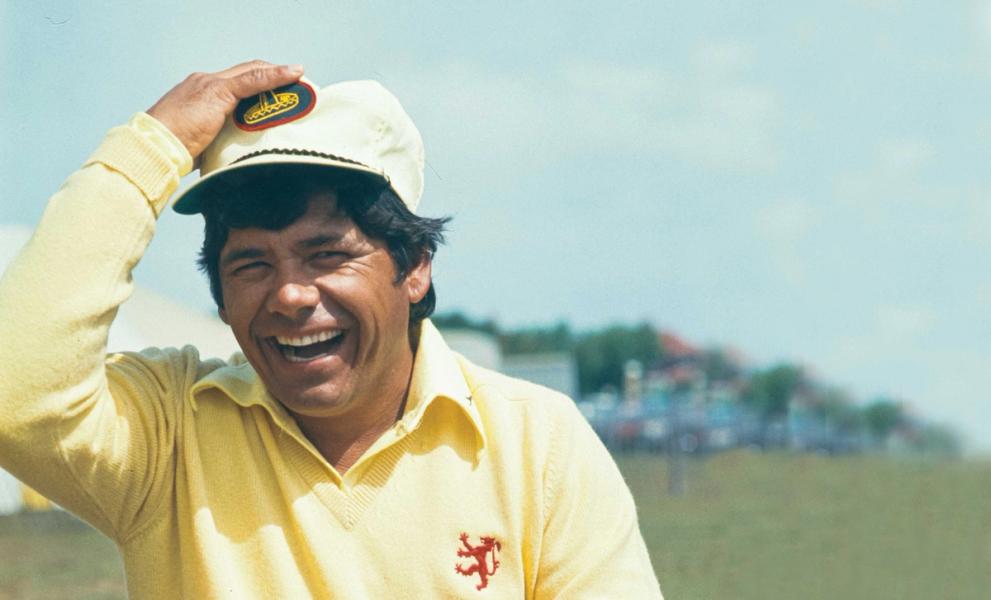
Lee Trevino is one of the most popular players in the history of the game.
When Trevino turned 17 in December 1956, he enlisted in the United States Marine Corps, and served four years as a machine gunner and was discharged in December 1960 as a corporal with the 3rd Marine Division. He spent part of his time playing golf with Marine Corps officers. After Trevino was discharged from the Marines, he went to work as a club professional in El Paso, Texas and joined the PGA Tour circuit in 1967.
He was 1971 PGA Player of the Year. He won the 1971 and 1972 British Opens and six majors overall, including two U.S. Opens and two PGA Championships. He was a winner five Vardon Trophies, recognizing the tour’s scoring average leader. Lee was a member of six Ryder Cup teams, plus captaining in 1985. He was third only to Jack Nicklaus and Tom Watson in career money. He won 29 PGA tournaments in all, plus an additional 29 on the now Champions tour.
At age 50, Trevino tore up the Senior Tour, the first senior to crack the million-dollar mark in a single season. It was more money than Greg Norman, the No. 1 money winner of the PGA Tour, earned that year. He is one of two golfers to win the PGA Tour's three oldest events in the same year: The Open Championship (1860), the U.S. Open (1895), and the Canadian Open (1904). Trevino won them in 1971 and Tiger Woods in 2000.
Lee is also a member of the World Golf Hall of Fame, inducted in 1981.
Birthplace: Garland, Texas
Born: December 1, 1939
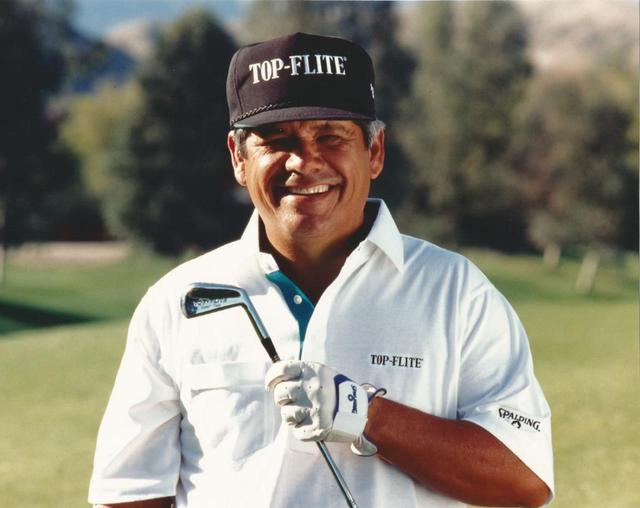
A Gentle Nudge From The Man
In 1955, Lee Trevino, who’d dropped out of school two years earlier — who was over a decade away from earning his PGA Tour card and launching his legendary career — was slinging hotdogs and Cokes at Knollwood Golf Club in Irving, Texas. His friend was a caddie, one with a keen eye. “my friend comes in — he was caddying — and he says, ‘You know, there’s a car out in the parking lot with spoke hubcaps. And he said, ‘They’d fit your car perfect.’” His car had no hubcaps and his friend knew where he could get some. “So he takes the hubcaps and throws them in the trunk of my car,” Trevino said. “And we put them on my car after we (left Knollwood), and they looked gorgeous on this ’49 Ford, a baby blue car going down the street.” The next day Trevino drove to work ... but forgot to remove the hubs before pulling into Knollwood’s driveway. A cop on a motorcycle was waiting. “he said, ‘Where’d you get those hubcaps?’” Trevino said. “And I’ve never been one to tell any stories, and I said, ‘Sir, my friend and I borrowed them.’ And he said, ‘Yeah, you borrowed them in the parking lot of the club.’” The cop gave him the man’s address and waited while Trevino returned the hubs and apologized. “That was the hardest job I’ve ever had to do,” Trevino said. “And I learned a lesson there.” “When I drove away, the policeman was waiting on me and he said to me, ‘How old are you son?’” Trevino continued. “I said, ‘Sixteen, sir.’ He said, ‘When are you gonna be 17?’ And I said, ‘In a month.’ He said, ‘I wanna send you to someone, and I want you to talk to him.’ “And it was the recruiter for the Marine Corps.” After turning 17 Trevino joined the Corps saying the Corps “was the greatest thing that ever happened to me.”

The Trevino Triple
Ben Hogan had a famous Triple Crown year in 1953 while Lee Trevino had one of his own in 1971. Trevino had a remarkable string of victories during a 20-day span during that summer. He famously defeated Jack Nicklaus in an 18-hole playoff to win the 1971 U.S. Open. Two weeks later, he won the Canadian Open (his first of three). The following week won The Open Championship, becoming the first player to win those three titles in the same year. As a result Trevino was awarded the Hickok Belt as the top professional athlete of 1971. He also won Sports Illustrated magazine's "Sportsman of the Year" and was named ABC's Wide World of Sports Athlete of the Year. It would be more than 30 years before a player would match Trevino's triple crown feat. In 2000 Tiger Woods won the same three championships, though it took almost two months to accomplish.
Deep Dive Interview
Lee Trevino - David Graham
Deep dive video interview

Lee Trevino - Mildred Babe Didrikson Zaharias
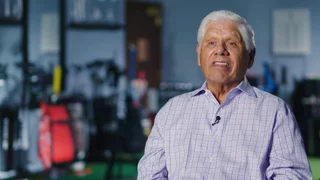
Lee Trevino - St. Jude Charity

Lee Trevino - 2023 Ryder Cup

Lee Trevino - Byron Nelson

Lee Trevino - I Didn't Have Many Options

Lee Trevino - David Spec Goldman

Lee Trevino - Hardy Loudermilk

Lee Trevino - Harvey Penick

Lee Trevino - Joe Black

Lee Trevino - Jack Nicklaus

Lee Trevino - Captain of A Ryder Cup

Ben Hogan's Grip & Tweaking Your Game

Lee Trevino - Lazy Boy Present

Lee Trevino - Gus Moreland

Lee Trevino - Canadian Open & Queen Elizabeth Hotel

Lee Trevino - Texas Golfers

Lee Trevino - Jimmy Demaret

Lee Trevino - Golf Hall of Fames

Lee Trevino - Ludvig Åberg

Lee Trevino - Mr. Lu Liang-huan

Lee Trevino - 1981 Ryder Cup

Lee Trevino - Teaching Tiger & Charlie Woods

Lee Trevino - Bill Rogers

Lee Trevino - Comparing Golf Tournaments & Championships

Lee Trevino - Bill Eschenbrenner

Lee Trevino - Okinawa Open

Lee Trevino - Ben Hogan

Lee Trevino - Tiger Woods & Equipment

Lee Trevino - Difficulty of Winning a Major Championship

Lee Trevino - Growing Up

Lee Trevino - Ryder Cup & Viktor Hovland

Lee Trevino - Charity Checks

Lee Trevino - Crenshaw & Kite

Lee Trevino - Ryder Cup Team Interactions

Lee Trevino - The Snake Thing

Lee Trevino - Kathy Whitworth

Lee Trevino - Bruce Lietzke
Select Photos
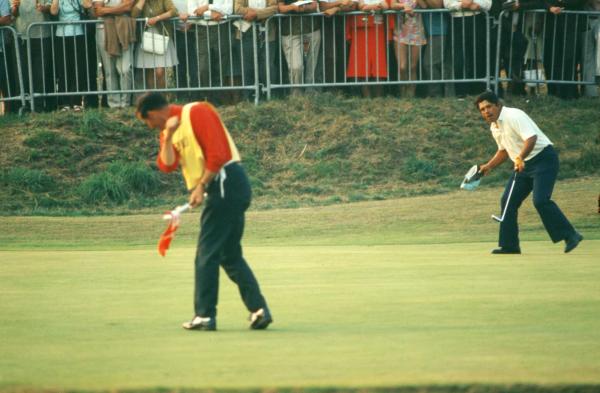
Burying a putt from long range at The British Open
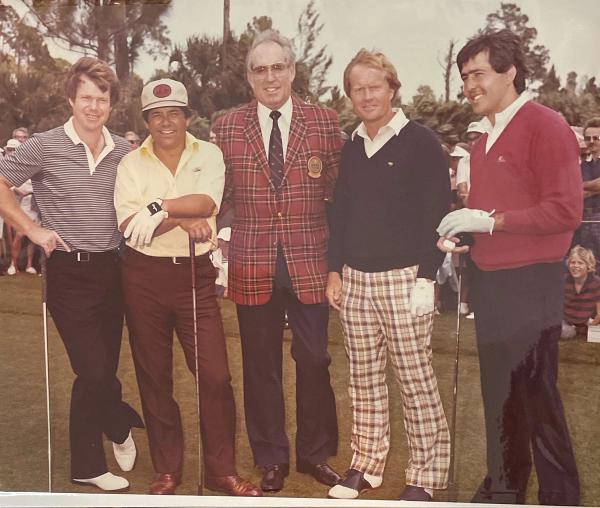
Joe with Tom Watson, Lee Trevino, Jack Nicklaus and Seve Ballesteros

World Series of Golf participants on the interview stage
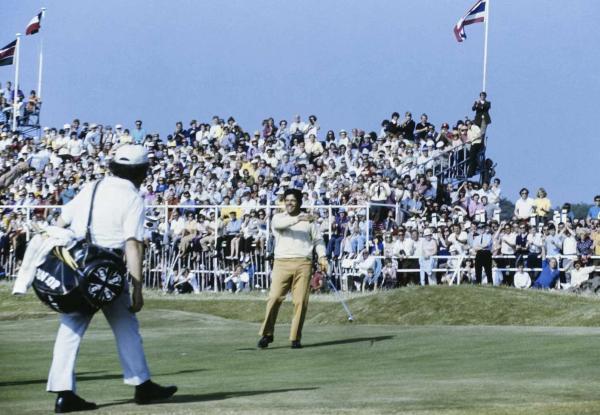
1971 & 1972 British Open Champion
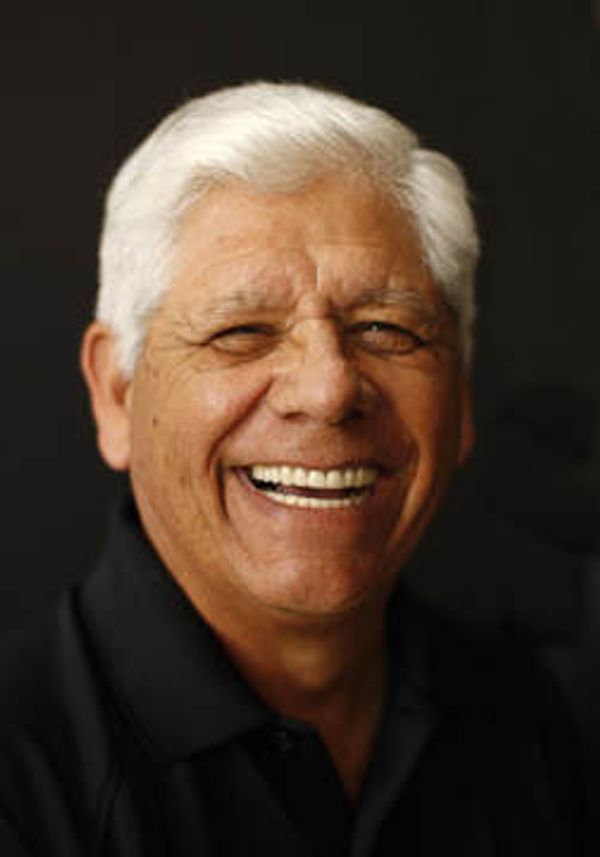
Smiling as always
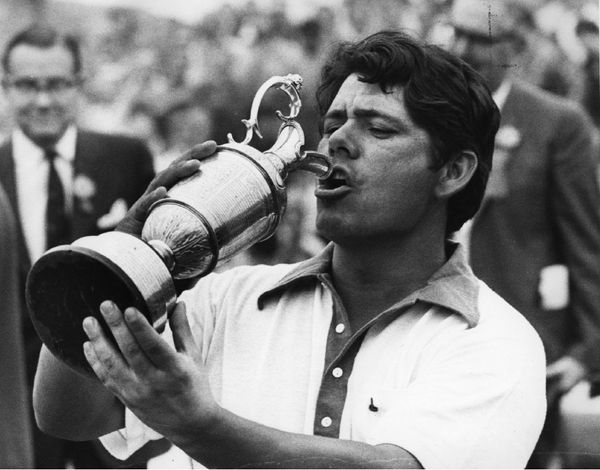
Hoisting the Claret Jug
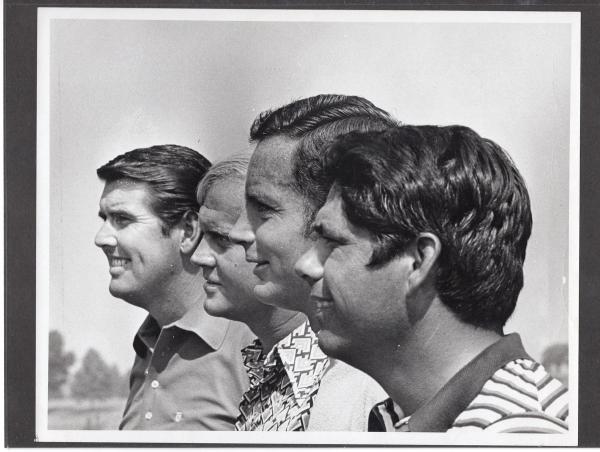
Participants in the 1971 World Series of Golf

Tiger and Lee Trevino
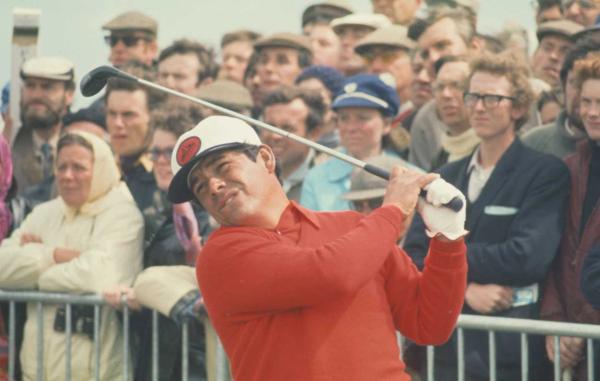
Swinging away at The Open
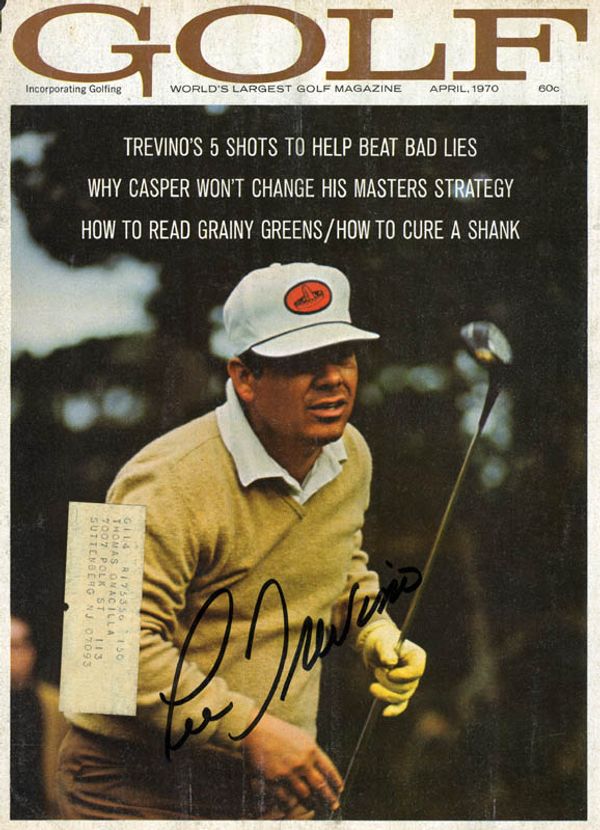
Trevino on the cover of Golf Magazine

The iconic swing of Lee Trevino

Captain Jack Burke Jr. celebrates a Ryder Cup victory with his team

A smiling shot of young Lee Trevino

Ambassador to the game
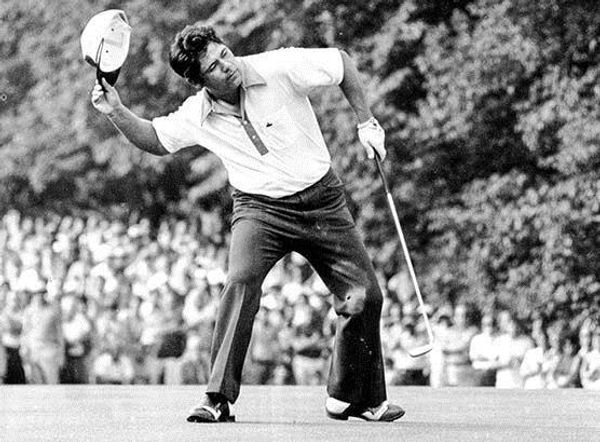
Ladies and gentlemen, Lee Trevino
Related Links & Media

FORE the Good of the Game
Guest appearances on Bruce Devlin's podcast:
https://www.forethegoodofthegame.com/guests/trevino-lee/
Related Exhibits
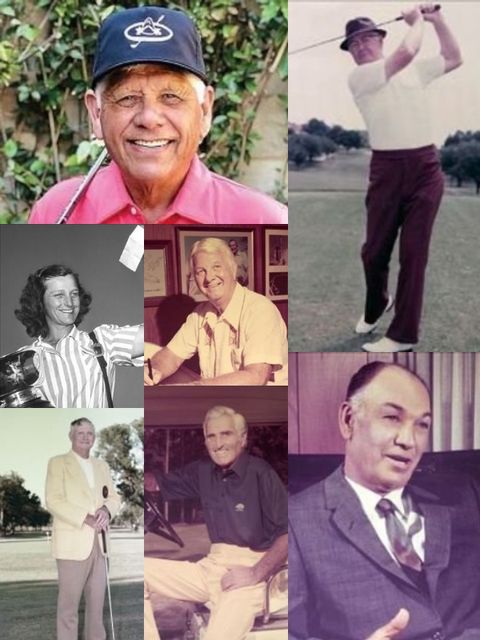
1978 Inductee Class
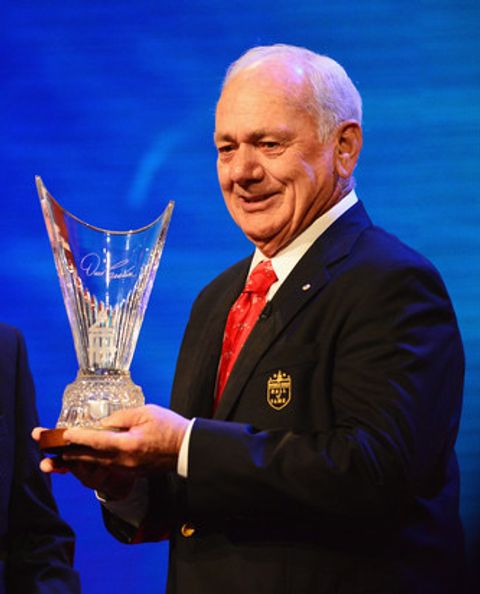
World Golf Hall of Fame

The Open Championship
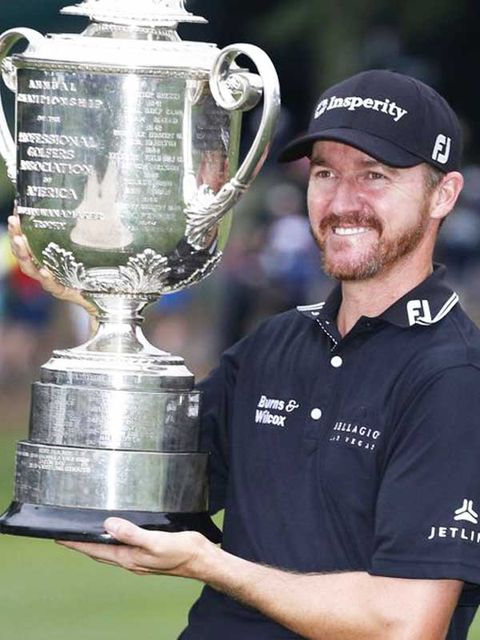
PGA Championship
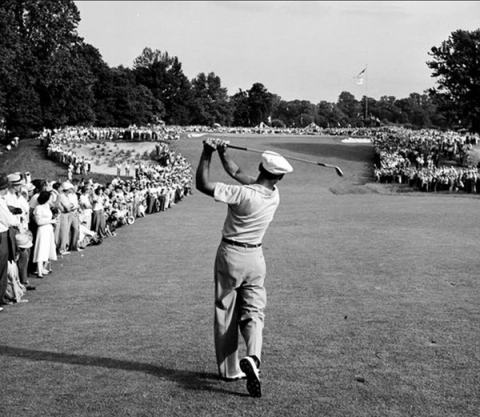
U.S. Open Championship

Ryder Cup Captains
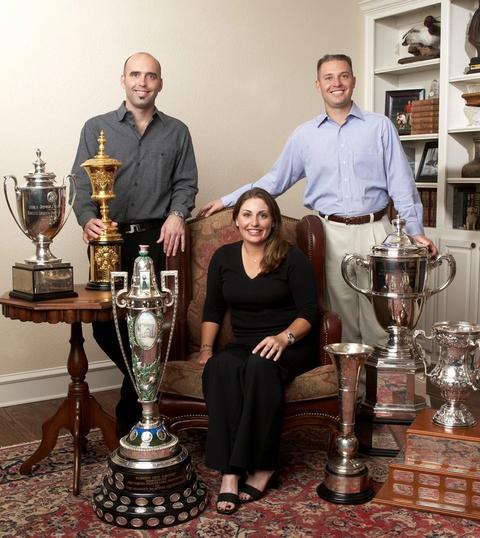
USGA Champions

Valero Texas Open
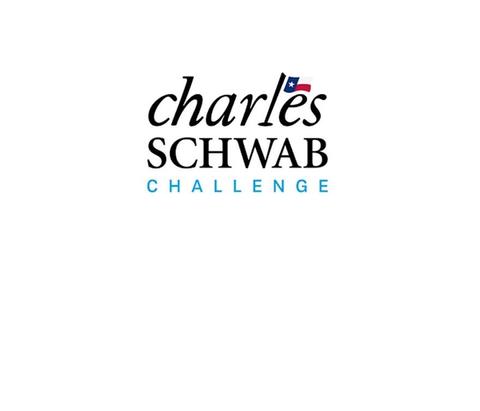
Charles Schwab Challenge
Texas Golf Hall of Fame
Anchor Physical Addresses: 2315 Avenue B San Antonio, TX 78215
16124 Championship Drive Frisco, TX 75033
Mailing Address: 448 West 19th Street, Suite #1082 Houston, TX 77008
Phone Number: 713-382-8723
Copyright ©2023
All Rights Reserved
Advertisement
Photos: lee trevino through the years, share this article.
Lee Trevino, a World Golf Hall of Fame member, won six majors and 29 PGA Tour events in his legendary career. He was born on Dec. 1, 1939.
Trevino is certainly one of the most unlikely multiple-major winners the sport has ever seen. After growing up poor in Texas and working in cotton fields from the age of 5, Trevino learned the game by sneaking onto courses to play and then caddying. He built his nerve in high-stakes gambling games and during a four-year stint in the U.S. Marine Corps as a machine gunner.
He built a repeatable push-fade that led to him becoming one of the most accurate ballstrikers of all time, even if he didn’t have the power of adversaries such as Jack Nicklaus or Tom Weiskopf.
After breaking through for his first Tour win and major title at the 1968 U.S. Open at Oak Hill, where he beat Nicklaus by four shots, he went on to win the 1971 U.S. Open at Merion (beating Nicklaus in a playoff); the British Open in 1971 (Royal Birkdale) and 1972 (Muirfield, beating Nicklaus by a shot); and the PGA Championship in 1974 (Tanglewood, again beating Nicklaus by a shot) and 1984 (Shoal Creek).
Affectionately known as the Merry Mex, Trevino was a fearsome competitor who loved to talk during rounds, frequently carrying on one-sided conversations with the galleries. He was the PGA Tour’s Player of the Year in 1971; won the Vardon Trophy (lowest scoring average) in 1970, ’71, ’72, ’74 and ’80; and was the Tour’s leading money winner in 1970. He was inducted into the World Golf Hall of Fame in 1981.
Here’s a look at his career in photos:

Check out the best equipment you can buy: Best drivers for 2024 | Best irons for 2024 | Best putters for 2024 | Best golf balls for 2024
Most Popular
Here are five notable teams that missed the cut at the 2024 zurich classic of new orleans, photos: lpga's amy olson announces retirement, is jon rahm having an existential crisis he's certainly going off his liv golf script a bunch, it's a wild scene again at liv golf adelaide. here are the photos to prove it, best golf vests for 2024, lynch: rory mcilroy thinks he can help the pga tour’s board. bless the lad’s optimism, the list of top 18 money winners in pga tour history has plenty of surprises.
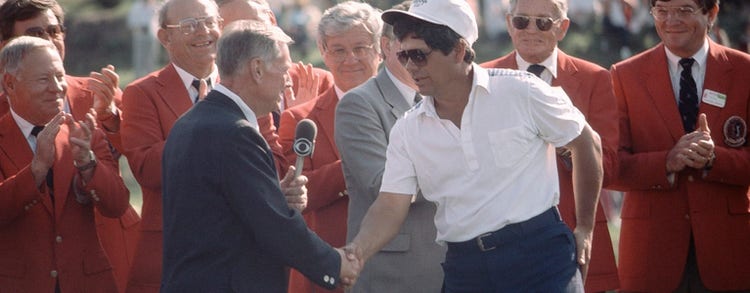
THE PLAYERS 1980: Lee Trevino
You can forgive the fans who attended the final round of THE PLAYERS Championship 1980 if they did a double-take. Had a tournament morphed into a Hall of Fame parade?
Actually, yes, because PGA TOUR fans were blessed by the show that broke out at Sawgrass Country Club. When Lee Trevino arrived with a slim lead to start the final round, all he could see close behind were luminaries — Jack Nicklaus, Gary Player, Tom Watson, Seve Ballesteros, Hale Irwin, Ben Crenshaw and Hubert Green, Hall of Famers, each and every one.
If Trevino, then 40, singled out Nicklaus above all, it was for good reason. Nicklaus had started the season with three pedestrian tournaments and folks appeared to be dismissing the icon. Bad move, Trevino insisted, because it wasn’t wise to poke a Golden Bear.
“Let him sleep,” Trevino said.
Of course, the roars for such an assembled lineup of stars might have stirred Nicklaus, too, and oh, how fans had a final pairing for the final round that was one for the ages — Trevino, Nicklaus, Player. It was the first time all three had been paired, and Trevino understandably took pride in how it played out.
Coming home in 2-under 70 for a 10-under 278 total, Trevino outshined Nicklaus and Player, both of whom shot 73. Holding off hard-charging Crenshaw (66) by one and Ballesteros and Watson by two, Trevino earned his 25th career win over an All-Star cast that put a string of exclamation points next to the phrase “strongest field in golf.”

“Let him sleep.” - Lee Trevino
The island green newsletter.
You'll get the latest news updates on social events and special offers delivered to your inbox!
https://www.pages08.net/archtics-stadiumandoutdoor1/ChampionshipManagementThePLAYERSChampionshipPreferenceCenter/The_Players_Championship_SignUp/
Claudia Looi
Touring the Top 10 Moscow Metro Stations
By Claudia Looi 2 Comments

Komsomolskaya metro station looks like a museum. It has vaulted ceilings and baroque decor.
Hidden underground, in the heart of Moscow, are historical and architectural treasures of Russia. These are Soviet-era creations – the metro stations of Moscow.
Our guide Maria introduced these elaborate metro stations as “the palaces for the people.” Built between 1937 and 1955, each station holds its own history and stories. Stalin had the idea of building beautiful underground spaces that the masses could enjoy. They would look like museums, art centers, concert halls, palaces and churches. Each would have a different theme. None would be alike.
The two-hour private tour was with a former Intourist tour guide named Maria. Maria lived in Moscow all her life and through the communist era of 60s to 90s. She has been a tour guide for more than 30 years. Being in her 60s, she moved rather quickly for her age. We traveled and crammed with Maria and other Muscovites on the metro to visit 10 different metro stations.

Arrow showing the direction of metro line 1 and 2

Moscow subways are very clean
To Maria, every street, metro and building told a story. I couldn’t keep up with her stories. I don’t remember most of what she said because I was just thrilled being in Moscow. Added to that, she spilled out so many Russian words and names, which to one who can’t read Cyrillic, sounded so foreign and could be easily forgotten.
The metro tour was the first part of our all day tour of Moscow with Maria. Here are the stations we visited:
1. Komsomolskaya Metro Station is the most beautiful of them all. Painted yellow and decorated with chandeliers, gold leaves and semi precious stones, the station looks like a stately museum. And possibly decorated like a palace. I saw Komsomolskaya first, before the rest of the stations upon arrival in Moscow by train from St. Petersburg.
2. Revolution Square Metro Station (Ploshchad Revolyutsii) has marble arches and 72 bronze sculptures designed by Alexey Dushkin. The marble arches are flanked by the bronze sculptures. If you look closely you will see passersby touching the bronze dog's nose. Legend has it that good luck comes to those who touch the dog's nose.

Touch the dog's nose for good luck. At the Revolution Square station

Revolution Square Metro Station
3. Arbatskaya Metro Station served as a shelter during the Soviet-era. It is one of the largest and the deepest metro stations in Moscow.

Arbatskaya Metro Station
4. Biblioteka Imeni Lenina Metro Station was built in 1935 and named after the Russian State Library. It is located near the library and has a big mosaic portrait of Lenin and yellow ceramic tiles on the track walls.

Lenin's portrait at the Biblioteka Imeni Lenina Metro Station

5. Kievskaya Metro Station was one of the first to be completed in Moscow. Named after the capital city of Ukraine by Kiev-born, Nikita Khruschev, Stalin's successor.

Kievskaya Metro Station
6. Novoslobodskaya Metro Station was built in 1952. It has 32 stained glass murals with brass borders.

Novoslobodskaya metro station
7. Kurskaya Metro Station was one of the first few to be built in Moscow in 1938. It has ceiling panels and artwork showing Soviet leadership, Soviet lifestyle and political power. It has a dome with patriotic slogans decorated with red stars representing the Soviet's World War II Hall of Fame. Kurskaya Metro Station is a must-visit station in Moscow.

Ceiling panel and artworks at Kurskaya Metro Station

8. Mayakovskaya Metro Station built in 1938. It was named after Russian poet Vladmir Mayakovsky. This is one of the most beautiful metro stations in the world with 34 mosaics painted by Alexander Deyneka.

Mayakovskaya station

One of the over 30 ceiling mosaics in Mayakovskaya metro station
9. Belorusskaya Metro Station is named after the people of Belarus. In the picture below, there are statues of 3 members of the Partisan Resistance in Belarus during World War II. The statues were sculpted by Sergei Orlov, S. Rabinovich and I. Slonim.

10. Teatralnaya Metro Station (Theatre Metro Station) is located near the Bolshoi Theatre.

Teatralnaya Metro Station decorated with porcelain figures .

Taking the metro's escalator at the end of the tour with Maria the tour guide.
Have you visited the Moscow Metro? Leave your comment below.
January 15, 2017 at 8:17 am
An excellent read! Thanks for much for sharing the Russian metro system with us. We're heading to Moscow in April and exploring the metro stations were on our list and after reading your post, I'm even more excited to go visit them. Thanks again 🙂
December 6, 2017 at 10:45 pm
Hi, do you remember which tour company you contacted for this tour?
Leave a Reply Cancel reply
You must be logged in to post a comment.
Please go to the Instagram Feed settings page to create a feed.
Dinamo Elektrostal
Match results.
* Won by shoot-out
About Dinamo Elektrostal
Moscow’s Dinamo Elektrostal are gearing up for their fifth EHL season having frequently picked off impressive wins but have yet to top their particular group in their previous attempts.
They did get the best of arch rivals Dinamo Ak-Bars in both the Russian Cup and the Prometheus International tournament to show they are knocking on the door.
There has been a reasonable level of turnover from 2020 with Anton Noshin, Evgenii Mokrousov, Aleksei Godenkov and Ivan Zuikov joining the newly formed TsOP Moskomsport outfit. Danill Karagodin, Mikhail Nekludov and Ilya Larikov have all retired.
Their replacements are mostly youngsters with Dmitry Zheleznyakov, Aleksei Samylkin, Petr Agapov, Ilia Bartenev, Andrei Gribanov and Oleg Kulakov joining their line-up.
EHL History 2013/14 – ROUND1 2015/16 – ROUND1 2017/18 – ROUND1 2018/19 – ROUND1
ARTEMOV Evgenii
Kuraev dmitrii, proskuriakov mikhail, zaytsev zakhar, zhirkov alexander, arusiia georgii, zheleznyakov dmitry, skuratov andrei, dvoretskii nikita, okishev arsenii, khairullin marat, samylkin aleksei, agapov petr, kuraev andrei, rogov roman, loginov iaroslav, bondariuk nikolai, kulakov oleg, laptev dmitry, bartenev ilia, spichkin matvei, lepeshkin sergey, gribanov andrei.
- Preplanned tours
- Daytrips out of Moscow
- Themed tours
- Customized tours
- St. Petersburg
Moscow Metro
The Moscow Metro Tour is included in most guided tours’ itineraries. Opened in 1935, under Stalin’s regime, the metro was not only meant to solve transport problems, but also was hailed as “a people’s palace”. Every station you will see during your Moscow metro tour looks like a palace room. There are bright paintings, mosaics, stained glass, bronze statues… Our Moscow metro tour includes the most impressive stations best architects and designers worked at - Ploshchad Revolutsii, Mayakovskaya, Komsomolskaya, Kievskaya, Novoslobodskaya and some others.
What is the kremlin in russia?
The guide will not only help you navigate the metro, but will also provide you with fascinating background tales for the images you see and a history of each station.
And there some stories to be told during the Moscow metro tour! The deepest station - Park Pobedy - is 84 metres under the ground with the world longest escalator of 140 meters. Parts of the so-called Metro-2, a secret strategic system of underground tunnels, was used for its construction.
During the Second World War the metro itself became a strategic asset: it was turned into the city's biggest bomb-shelter and one of the stations even became a library. 217 children were born here in 1941-1942! The metro is the most effective means of transport in the capital.
There are almost 200 stations 196 at the moment and trains run every 90 seconds! The guide of your Moscow metro tour can explain to you how to buy tickets and find your way if you plan to get around by yourself.

- Victor Mukhin

Victor M. Mukhin was born in 1946 in the town of Orsk, Russia. In 1970 he graduated the Technological Institute in Leningrad. Victor M. Mukhin was directed to work to the scientific-industrial organization "Neorganika" (Elektrostal, Moscow region) where he is working during 47 years, at present as the head of the laboratory of carbon sorbents. Victor M. Mukhin defended a Ph. D. thesis and a doctoral thesis at the Mendeleev University of Chemical Technology of Russia (in 1979 and 1997 accordingly). Professor of Mendeleev University of Chemical Technology of Russia. Scientific interests: production, investigation and application of active carbons, technological and ecological carbon-adsorptive processes, environmental protection, production of ecologically clean food.
Title : Active carbons as nanoporous materials for solving of environmental problems
Quick links.
- Conference Brochure
- Tentative Program


IMAGES
COMMENTS
The Official PGA TOUR Profile of Lee Trevino. PGA TOUR Stats, bio, video, photos, results, and career highlights
Lee is regarded as one of the greatest players and characters in golf history. In total Trevino won 6 Major Championships and 29 PGA Tour events. In 1981 Trevino was inducted to the World Golf Hall of Fame. He is one of only four players to twice win the US Open, The Open Championship and the PGA Tour Championship.
Lee Buck Trevino (born December 1, 1939) is an American retired professional golfer who is regarded as one of the greatest players in golf history. He was inducted to the World Golf Hall of Fame in 1981. Trevino won six major championships and 29 PGA Tour events over the course of his career. He is one of only four players to twice win the U.S. Open, The Open Championship and the PGA Championship.
With 29 regular Tour victories including the first to win three countries' national Opens — U.S., British and Canadian — in four weeks of the same year. ... Lee Trevino: I don't play as ...
Lee Trevino (born December 1, 1939, near Dallas, Texas, U.S.) is an American professional golfer who became an immediate success when he joined the Professional Golfers' Association of America (PGA) Tour in 1967 and soon was recognized as one of the finest players in the world.. Of Mexican-American descent, Trevino received a grade-school education, served in the U.S. Marine Corps, and ...
Lee Trevino and Gary Player pose for a selfie Photo courtesy Gary Player One day, Floyd, who would go on to win four major championships and have a Hall of Fame career, received an odd overture to ...
Lee Trevino had a long and storied career that included six major victories as well as 29 wins on each of the PGA and Champions Tours. Awarded for his dynamic career with an induction to the World Golf Hall of Fame in 1981, Trevino is known in the golf community for his quick wit and exceptional play on the biggest of golf's stages.
Lee Trevino, 1971 Sportsman of the Year Trevino won three times in 1969 and 1970, stuff that hardly requires revision. But two of the wins were in one place — the Tucson Open.
Trevino would go on to win 29 times in total on the PGA TOUR, including six major championships, to cement his status in the World Golf Hall of Fame in 1981. More importantly, Trevino, nicknamed ...
October 20, 2009. Lee Trevino with Minnie, photographed at home in North Dallas by Walter Iooss Jr. Lee Trevino is out on the manicured grounds of his expansive French-colonial mansion in North ...
He aligned left of his target and faded the ball, and was amazingly consistent at placing the ball right where he wanted it. Lee Trevino was elected to the World Golf Hall of Fame in 1981. Here is the list of golf tournaments won by Lee Trevino on the PGA Tour and Champions Tour. He won 29 times on each tour.
View the profile of the golfer Lee Trevino from United States on ESPN. Get the latest news, live stats, and tour highlights.
He is one of two golfers to win the PGA Tour's three oldest events in the same year: The Open Championship (1860), the U.S. Open (1895), and the Canadian Open (1904). Trevino won them in 1971 and Tiger Woods in 2000. Lee is also a member of the World Golf Hall of Fame, inducted in 1981. Birthplace: Garland, Texas.
Lee Trevino, a World Golf Hall of Fame member, won six majors and 29 PGA Tour events in his legendary career. He was born on Dec. 1, 1939. Trevino is certainly one of the most unlikely multiple-major winners the sport has ever seen. After growing up poor in Texas and working in cotton fields from the age of 5, Trevino learned the game by ...
Trevino earned his 25th career win over an All-Star cast that put a string of exclamation points next to the phrase "strongest field in golf." ... because PGA TOUR fans were blessed by the show that broke out at Sawgrass Country Club. When Lee Trevino arrived with a slim lead to start the final round, all he could see close behind were ...
How Lee Trevino's nerves turned to confidence coming down... Lee Trevino describes final three holes at Oak Hill | "I don't lay up, give me the 6-iron." How Lee Trevino's nerves turned to confidence coming down the stretch in his win at Oak Hill in 1968. | By PGA TOUR Champions
Lee Trevino shares his take on the PGA Tour's uphill battle against LIV Golf. Lee Trevino chatted with Colt Knost and Drew Stoltz on Subpar. There are few players who can match the frank candor ...
The two-hour private tour was with a former Intourist tour guide named Maria. Maria lived in Moscow all her life and through the communist era of 60s to 90s. She has been a tour guide for more than 30 years. Being in her 60s, she moved rather quickly for her age. We traveled and crammed with Maria and other Muscovites on the metro to visit 10 ...
Moscow's Dinamo Elektrostal are gearing up for their fifth EHL season having frequently picked off impressive wins but have yet to top their particular group in their previous attempts. They did get the best of arch rivals Dinamo Ak-Bars in both the Russian Cup and the Prometheus International tournament to show they are knocking on the door.
The Moscow Metro Tour is included in most guided tours' itineraries. Opened in 1935, under Stalin's regime, the metro was not only meant to solve transport problems, but also was hailed as "a people's palace". Every station you will see during your Moscow metro tour looks like a palace room. There are bright paintings, mosaics ...
Catalysis Conference is a networking event covering all topics in catalysis, chemistry, chemical engineering and technology during October 19-21, 2017 in Las Vegas, USA. Well noted as well attended meeting among all other annual catalysis conferences 2018, chemical engineering conferences 2018 and chemistry webinars.